Kira-Whati?
There have been a handful of “mysterious” nations that I’ve been intrigued with over the years, and I saved Kiribati until close to the end. The Pacific island nation joins other fascinating places that my friends have never heard of, like Nauru, Tuvalu, Mauritania, Equatorial Guinea and Suriname. These are places we did not learn about in social studies class and are rarely (if ever) in the American or even world news. These also happen to be my favorite kind of places to visit. While it seems everyone else on Instagram is hanging out in Cabo or Tulum, I absolutely love to be the guy traveling to the nation those people have never even heard of. I don’t say this in a condescending or elitist way whatsoever. I fully admit that I am the weirdo. I own it.
Thinking back over my life—including my childhood—not only did I rarely follow trends…I despised them. I’ve always done my own thing—often to the extreme—and I guess going to Kiribati is how my adult self handles trends. They’re at Coachella, I’m in Kiribati. I wouldn’t have it any other way.
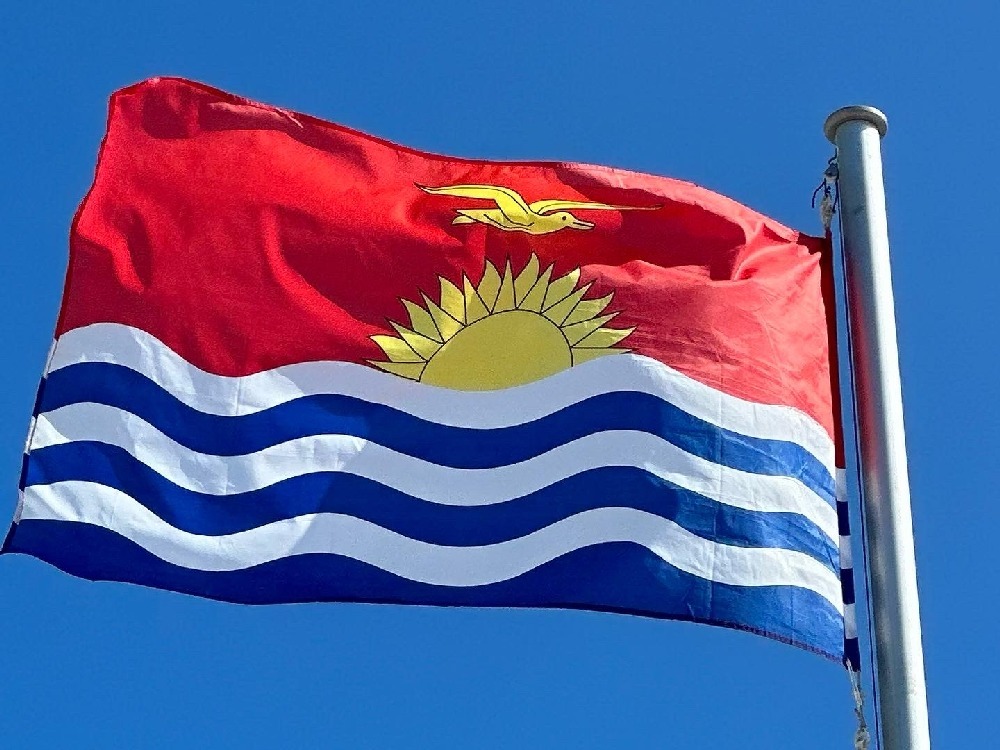
Route Canal
I was down to my last ten countries and attempting to check-off all nine remaining in The Pacific in one trip. And even though this journey would be my longest vacation ever (as a working adult), piecing together a visit to all nine of these Pacific nations in a limited amount of time was indeed one of the hardest puzzles I’ve ever attempted to put together.
Most of these island nations are not connected to each other (via direct routes), requiring back-and-forth flights to Fiji to get there. And none of those Fiji connections were even same day: I’d overnight in Fiji a total of three times on this trip, including one connection that required a two-night stay in Fiji just to pick up my next flight. This is not a complaint, just an observation. And who could be mad about “having to go to Fiji?!”
Of the nine new countries on this trip, I was most excited about Kiribati, for the reasons outlined above. Once wheels were up and I was on my way, I let out a hearty sigh of relief – flight delays and cancellations on this side of the world are all too common. But alas, three hours later we were descending over the most incredible shades of turquoise water I’d ever lay my eyes on. The kids who lined the runway to greet my incoming flight with enthusiastic smiles and waves was an early tip-off that I was really in for a treat. My dream of visiting Kiribati had been realized. This was my country number 187.
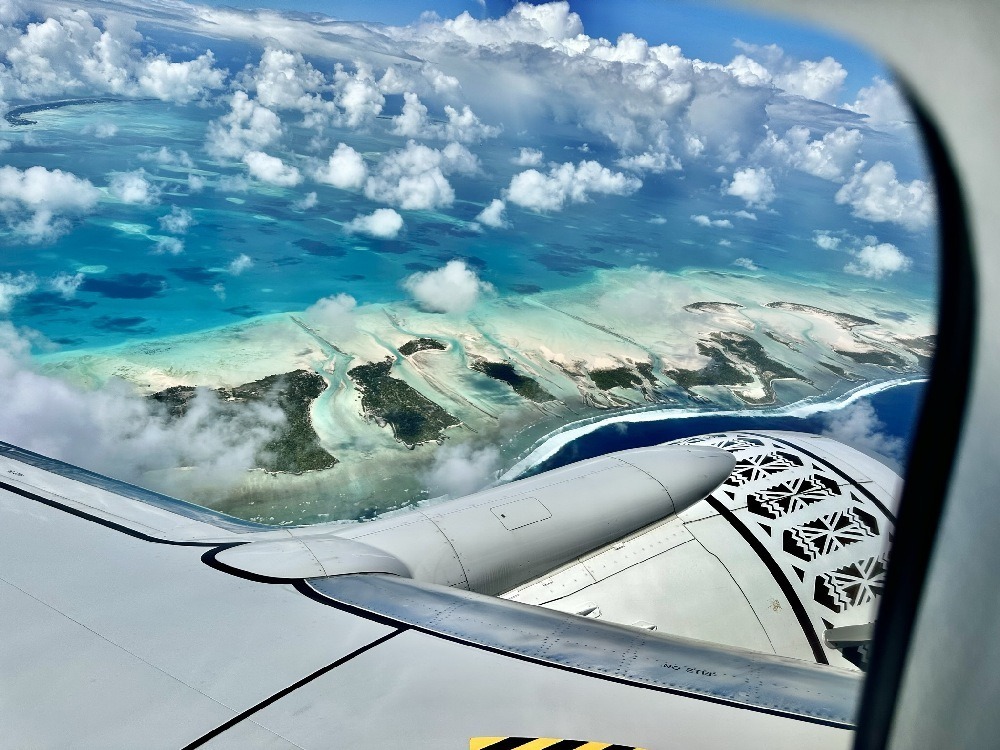
Como se dice “Kiribati?
Before we go any further, I should stop you right here and inform you that you are probably reading the name of this country incorrectly. So was I, and so does almost everyone. But Kiribati is actually pronounced Keery-baas. Strange right? Something about their Ts, when followed by an I…it makes an S sound. For example, my car rental agent’s name was spelled Titi, but you pronounce it See-see. So, moving forward, when you read Kiribati, I fully expect you to be saying Keery-baas in your head. Or if you really want to sound like a bad-ass, you can say it with a true accent like the locals: Keedy-baas. I believe in you, you can do it.
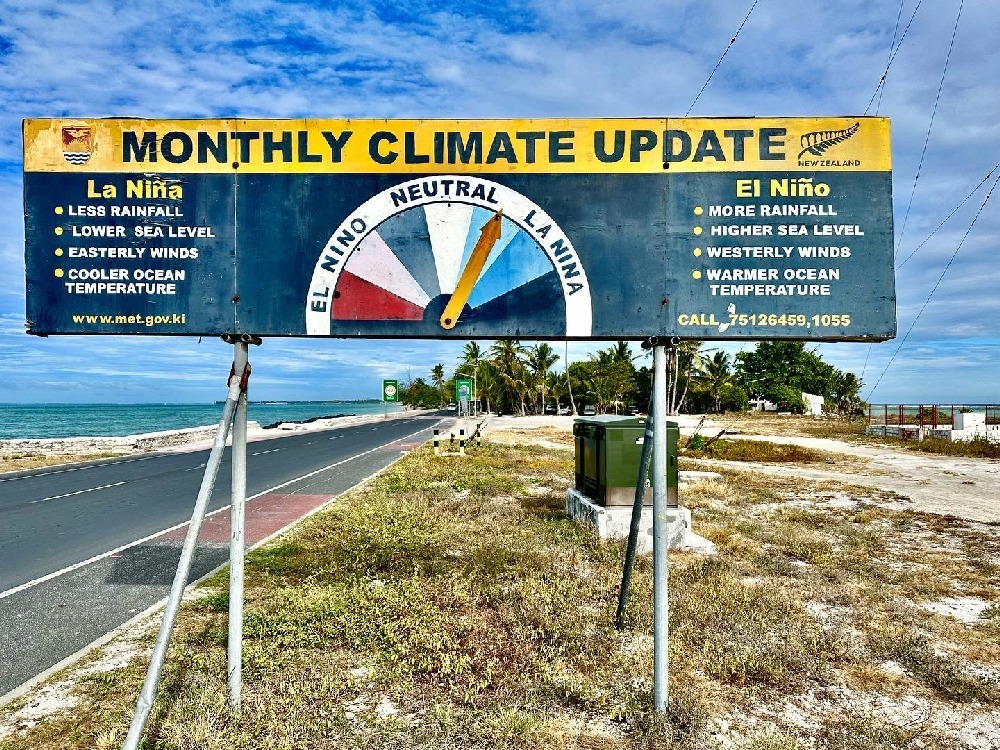
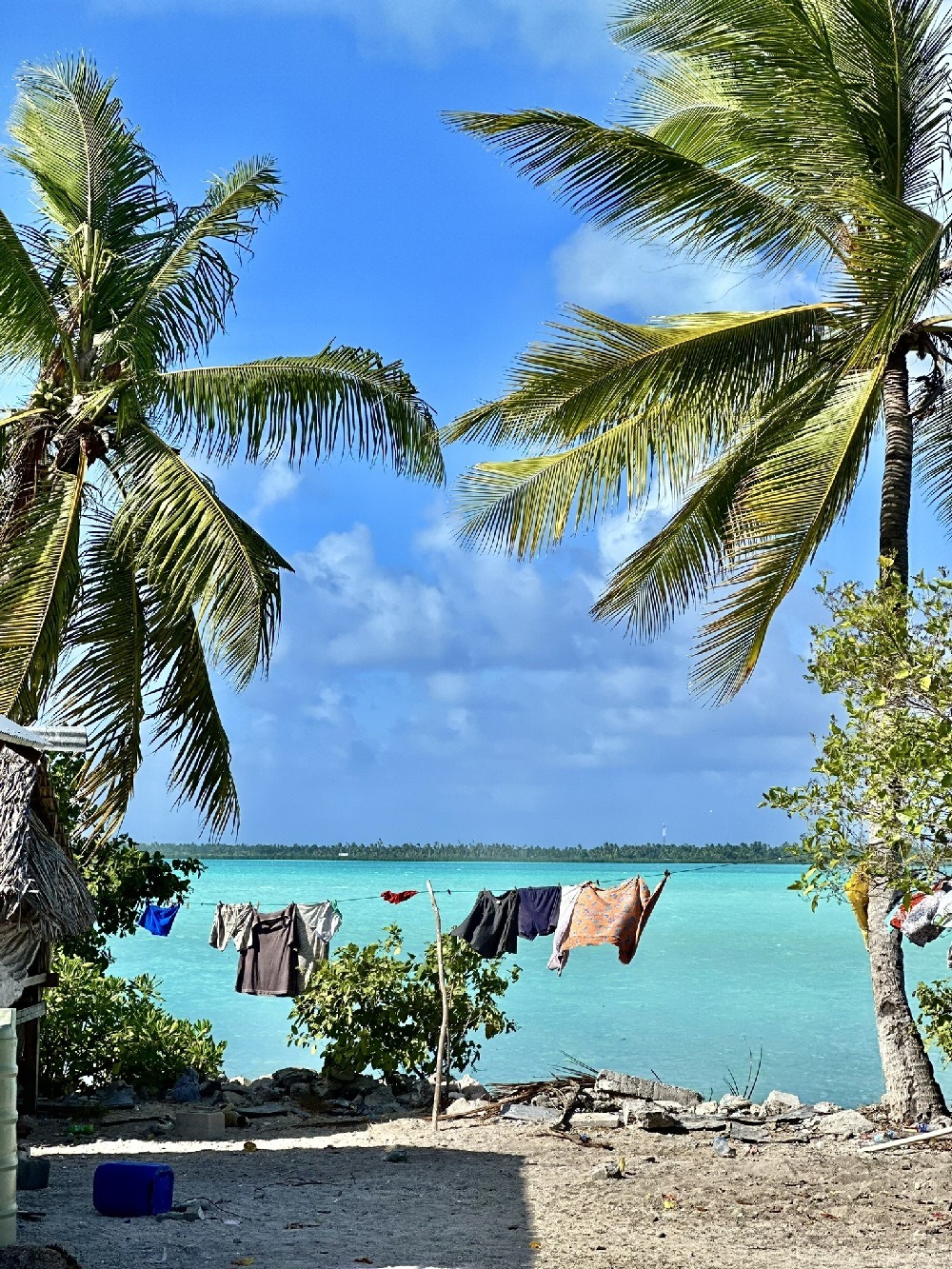
Life is a Highway
I rented a car for this trip and once I was actually here, I knew I made the right decision. The main island is extremely narrow, but about 30 kilometers long. The atoll looks like a very skinny, bent arm. I was super nervous driving on the left-hand side, recounting that one time in Nauru where I almost crashed into a scooter with a woman and her baby riding on it. It’s not driving on the left that gets you – it’s forgetting who to yield to when making turns. The good news here: There were not many intersections at all – just one main road that runs the length of the island, coincidentally named Main Road.
Driving Main Road was not the most relaxing at first. In fact, driving through Kiribati (You read Keedy-baas here, yes? I knew I could count on you!) would be an awesome plot for a 1980s video game, with a neverending cast of characters you must avoid “hitting” while getting from one side of the island to the other. There are more dogs than people here and they’re constantly scurrying across the street with little or no notice. There are zero stoplights in the entire country. On one side road, a doggie was napping in the very middle of the street! Then there are the kids. So many kids…and babies! I could absolutely not hit a child here (or anywhere)! You’ve also got the occasional pig, chicken and cat running around. And overall, Main Road is extremely narrow, with a curb made of bricks on both sides – which I scraped twice during my stay here. The only thing missing was a giant ape throwing barrels across the road. I’m telling you, this would be the perfect video game!
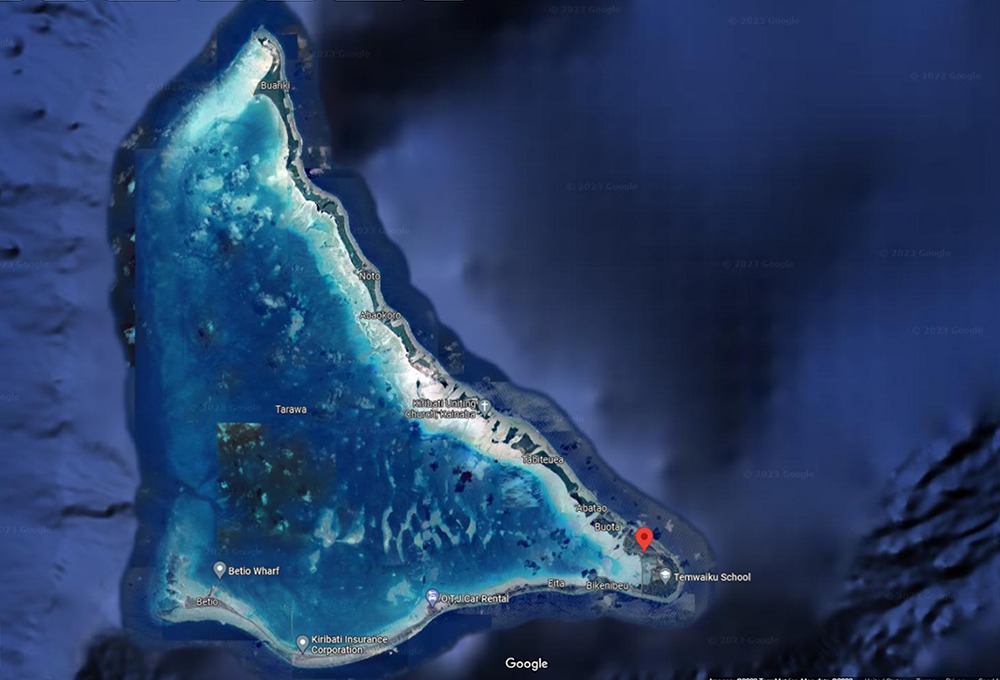
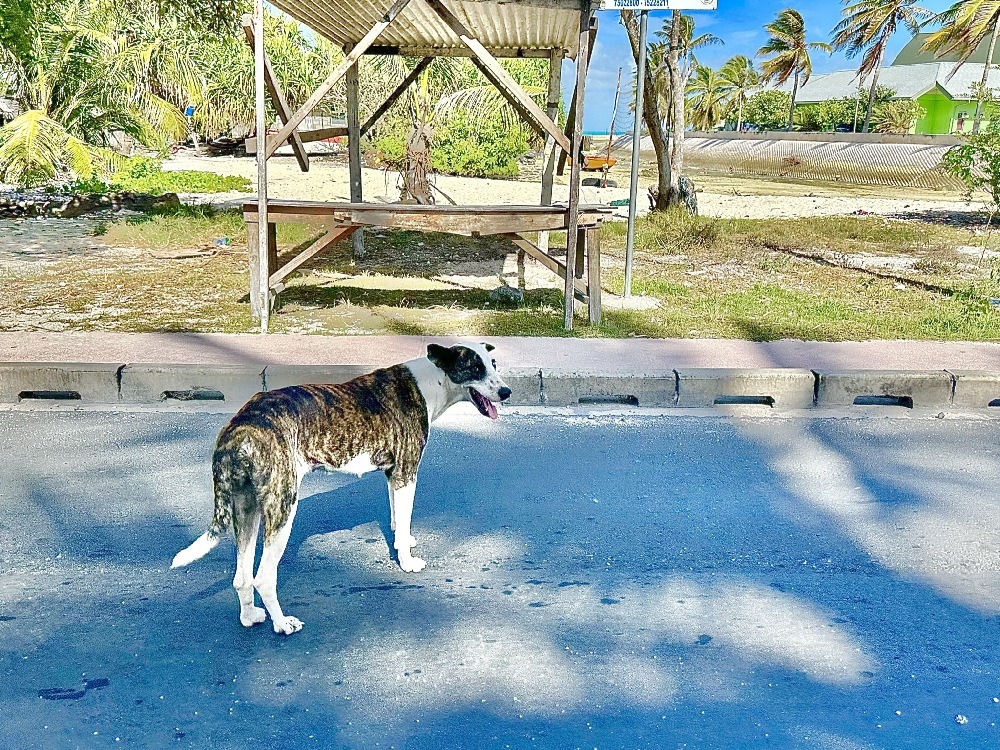
More, Mon!
One of the things that stood out immediately was the huge LDS (Mormon) presence. Their churches—the most modern buildings on the island—were all over the place. In fact, there were at least a dozen church members on my flight in, all wearing white shirts, ties and name tags. I chatted up one of the fellows while we were in line at immigration, a young man from Utah, who would stay on the island for six months doing work for the church. I was curious why the Mormons were drawn to Kiribati of all places. I hadn’t noticed them on any other Pacific Island. Why Kiribati?
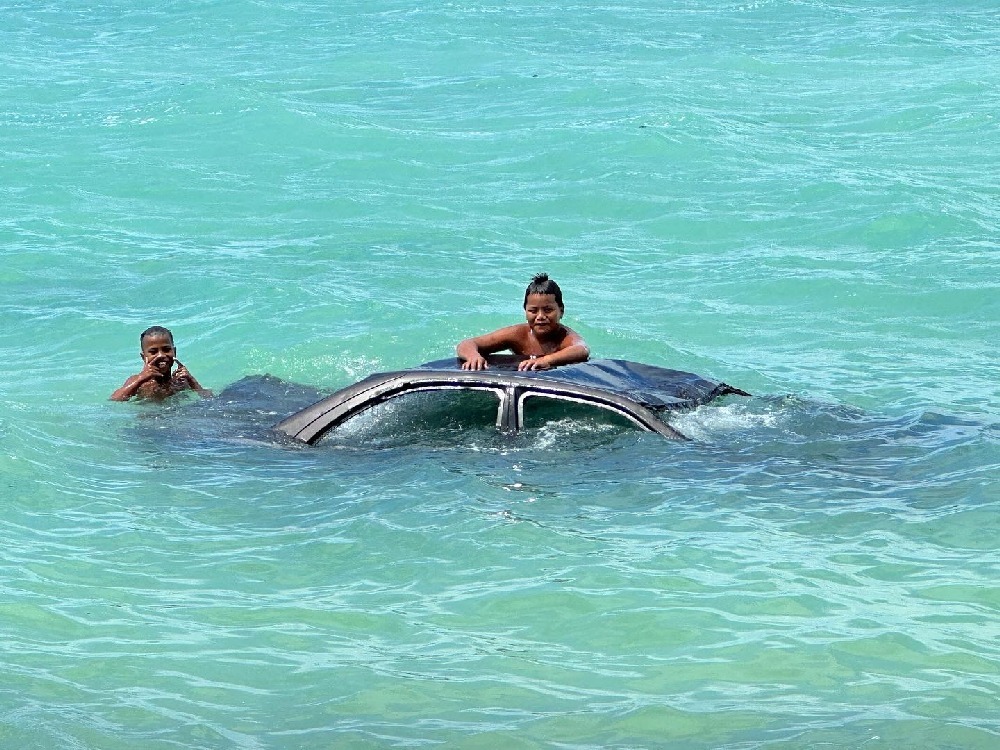
You Can Check in Anytime You Like…
First order of business was checking into the hotel – the nicest one on the island – the Utirerei. By the way, did you pronounce it correctly? If you said Oosie-ray-ray, then I am very proud of you. If you said Ootie-ray-ray, then please re-read paragraph six before preceding any further. Do not pass go. Do not collect $200.
It would be unfair to say anything bad about the Utirerei. It was fine. Let’s just say it was not up to American standards. Again, not a complaint, just an observation. The yellow cinderblock building with orange doors was clean and spider-free, and really, that’s all I can ask for. But it was the kind of place with bare light bulbs for lamps, sketchy sheets and a bathroom from 1970. The 13-inch old-school “tube” TV had one channel with sports and no sound. In the US this was the kind of hotel in the bad part of town that would cost $29 a night (or rent by the hour), but again, this is a small Pacific island and par for the course. I was not in Fiji, or even Samoa or Tonga, where you can score a really swanky place with room service and spa offerings. Kiribati is not a tourist destination, and so it only makes sense such fancy (or even “up-to-date”) hotels and resorts simply do not exist here. I was staying in nicest hotel in the entire country!
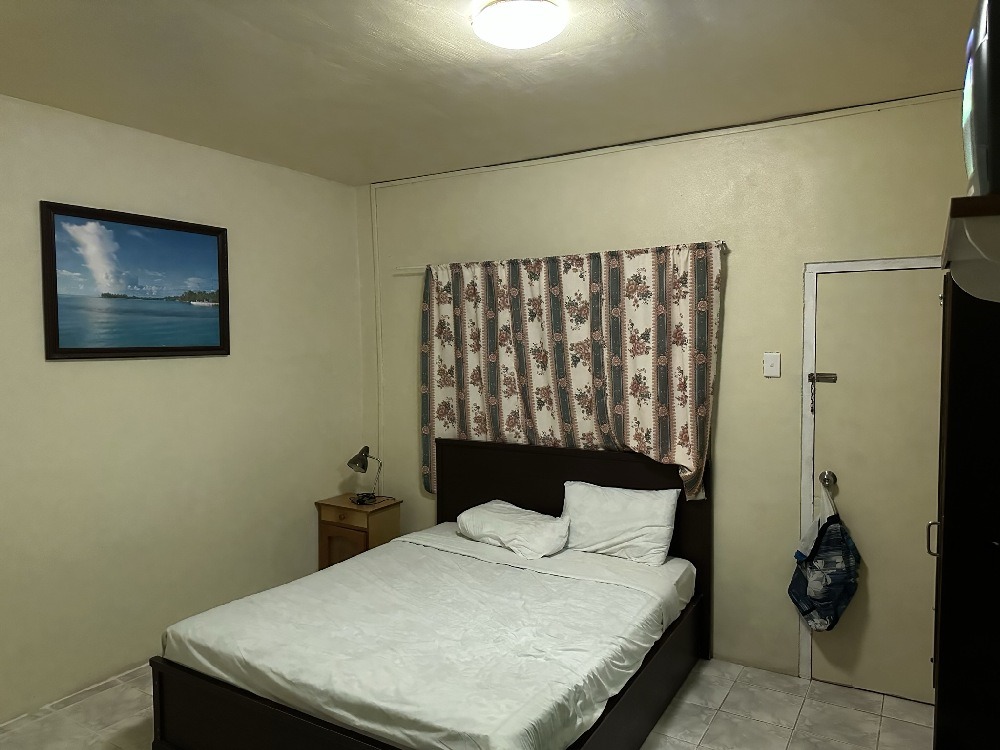
Lei of the Land
I’d have two full days on the island, not including this first afternoon. I didn’t want to waste even a moment of sunlight, so I decided to drive the island and get my bearings before dark. I wanted to hit the ground running tomorrow morning with a plan.
First, I’d hang a right and head south, stopping for supplies at a small store to make sure I had water and snacks for the night. Perusing the supermarket aisles in foreign countries has been a longtime must-do activity for me. On a small island like Kiribati, the pickin’s are extremely slim, with mostly imported, packaged foods from Australia, New Zealand, Philippines and the UAE. There were tons of junk food on the shelves: off-brand chips, soda and lots of canned fish and meat. There are no ranches in the country, which meant all chicken and beef are imported. I settled for a can of Pringles and three large waters and was on my way. And like Nauru and Tuvalu, Kiribati does not have their own currency, instead relying on and using the Australian dollar. The first couple places I shopped at accepted the USD, but they weren’t used to it and I think I came out short after they converted (or attempted to convert) for my change.
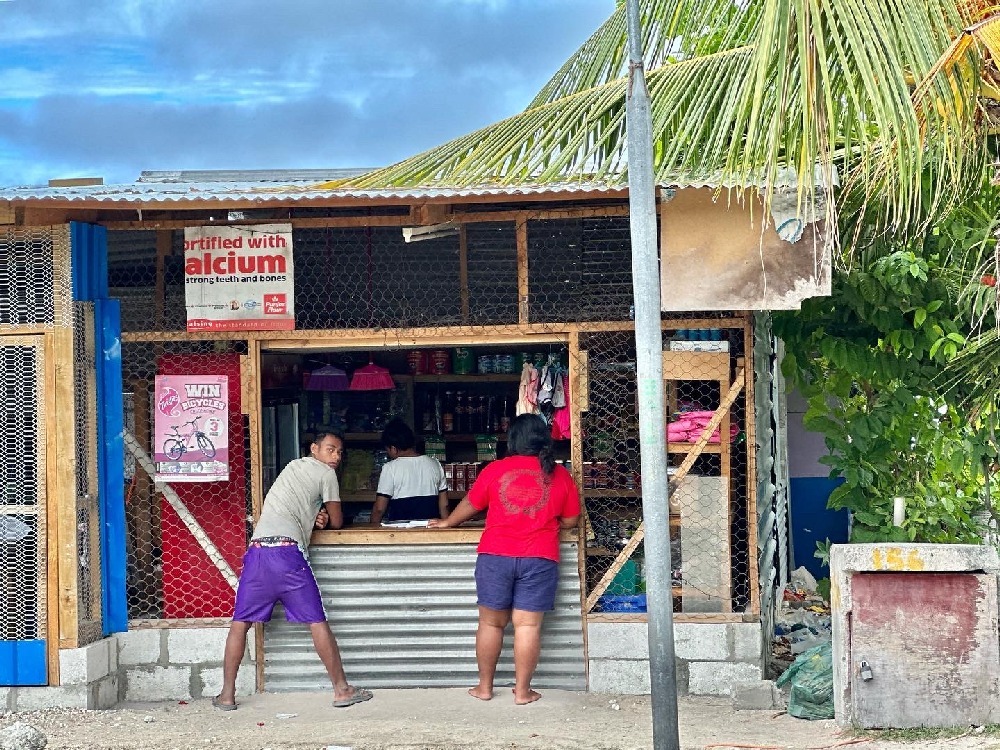
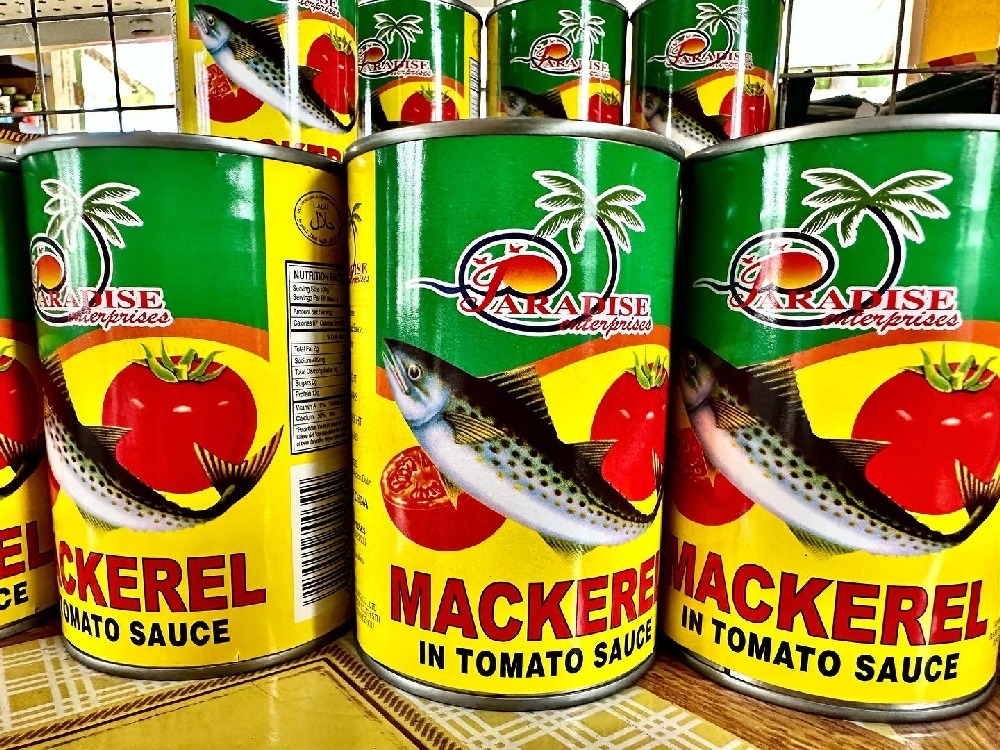
Sun’s Out, Guns Out
40 minutes later I’d reached the last island in the chain, Betio. And if you read it like Bay-so, then you’ve earned an A+ so far. It was in Betio where I got to see all the old WWII guns. The Japanese had defeated the Americans here and installed giant guns on the coastline. They remain here today, rusted and slowly rotting little by little. You can Google the “Battle of Tarawa” for more. Super interesting stuff and I loved seeing raw history just sitting out in the open here. No museum, park or even a placard: just a bunch of giant guns pointing out to see. Surreal.
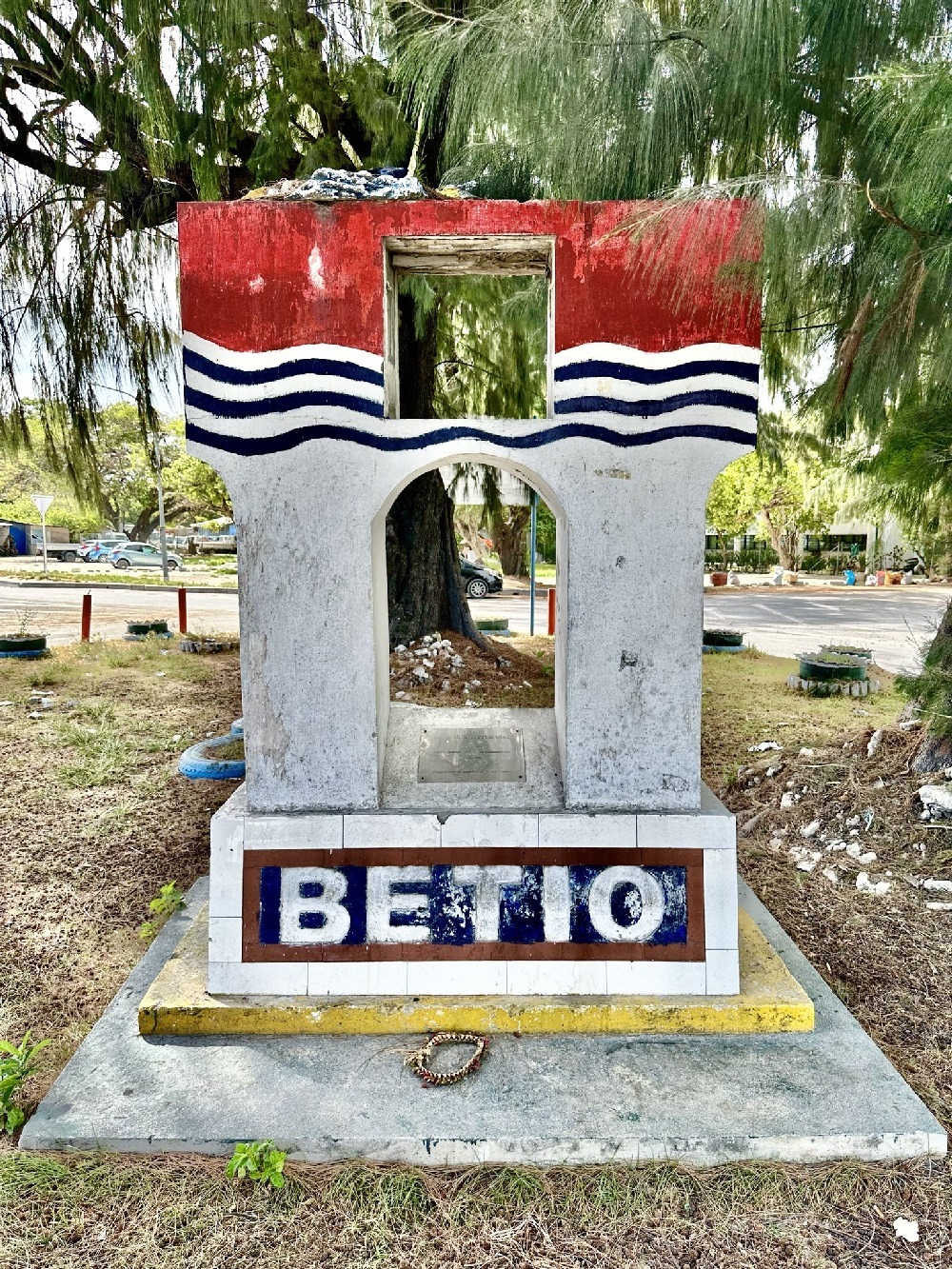
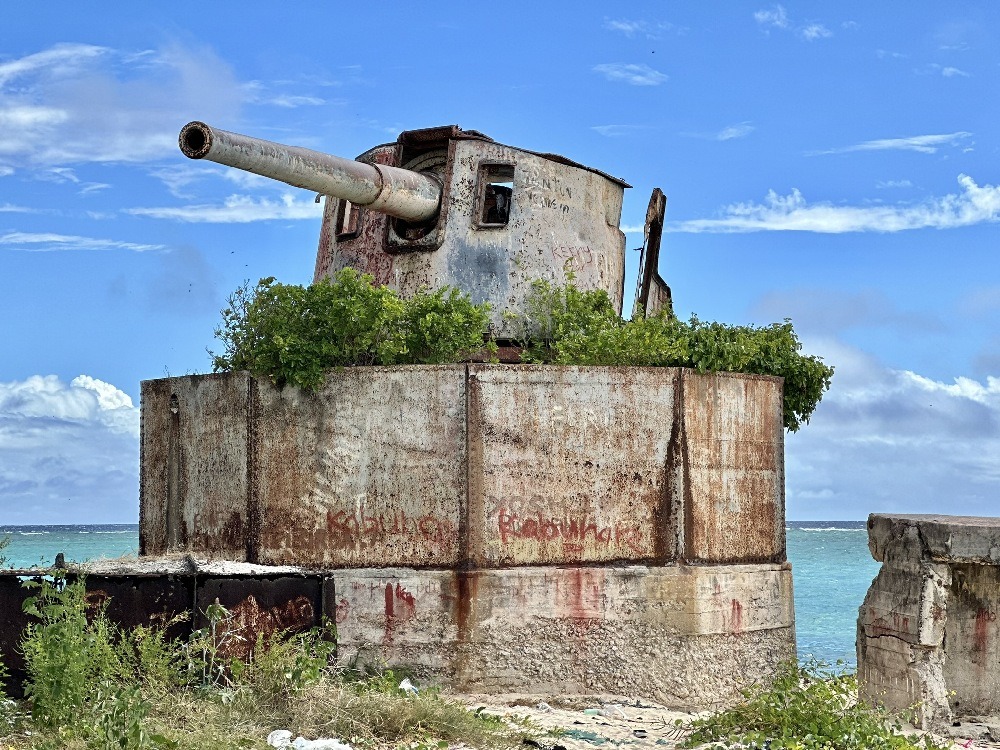
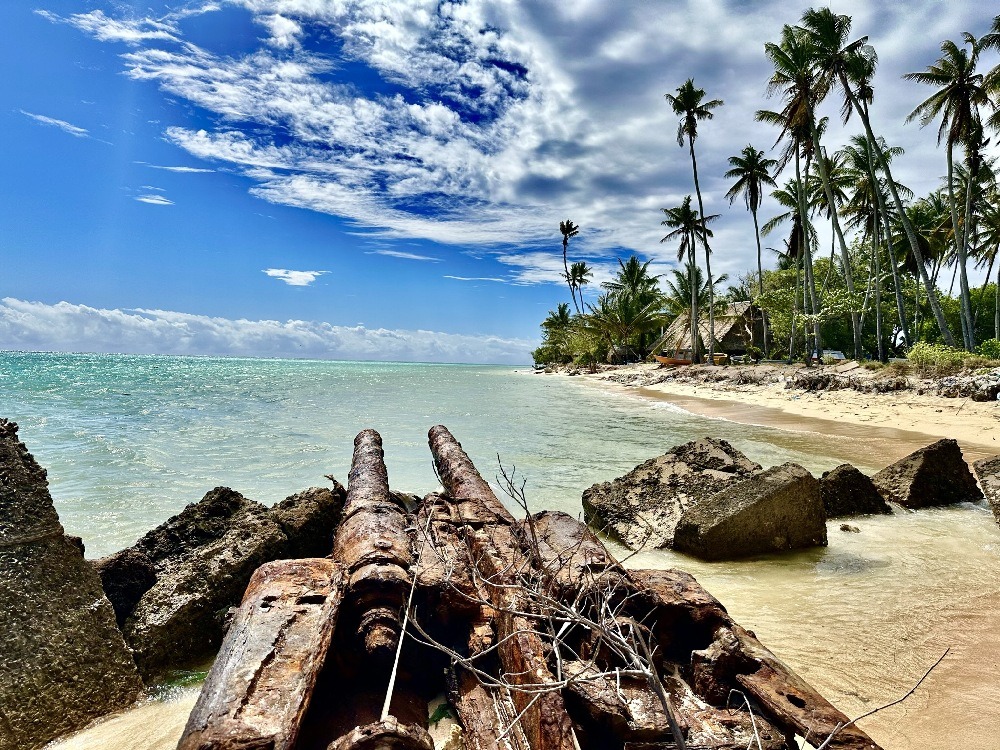
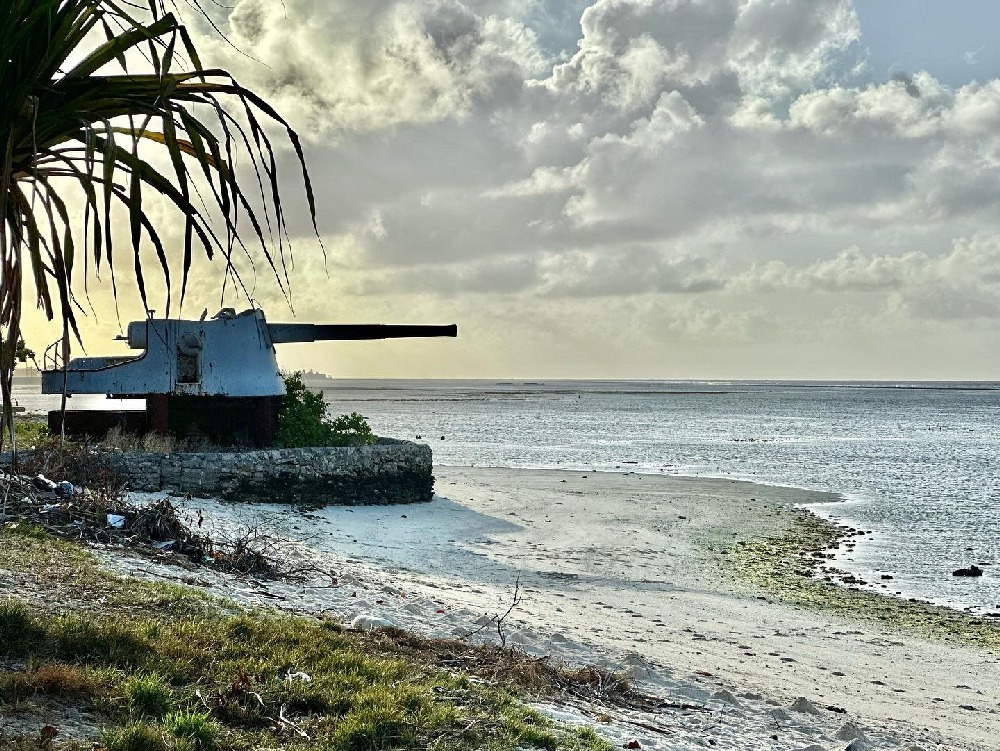
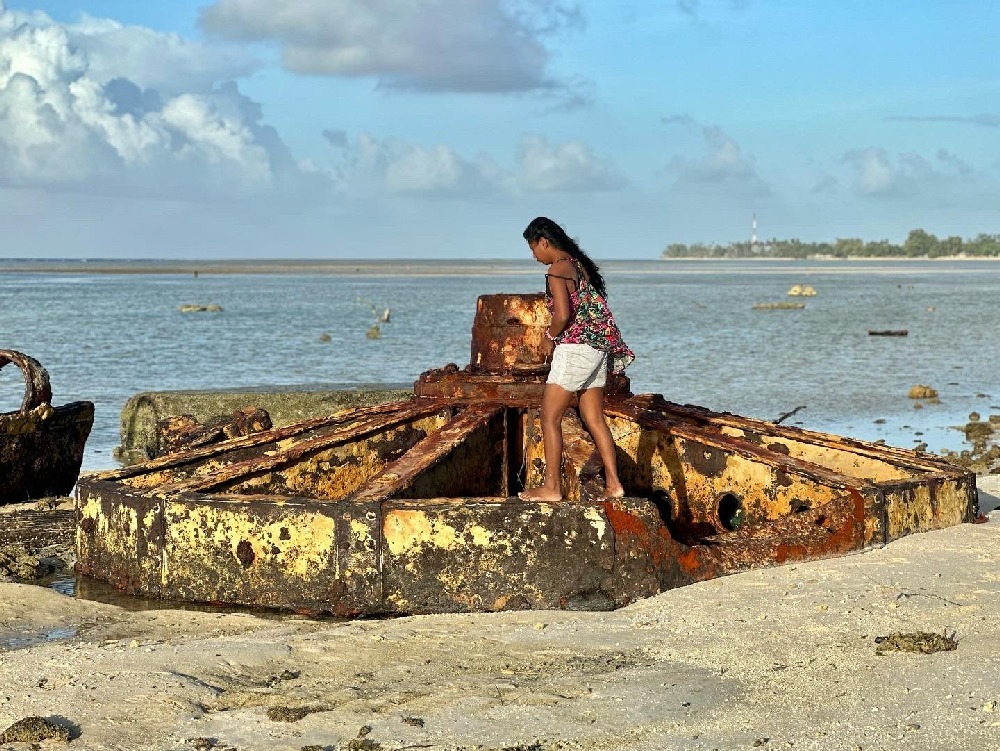
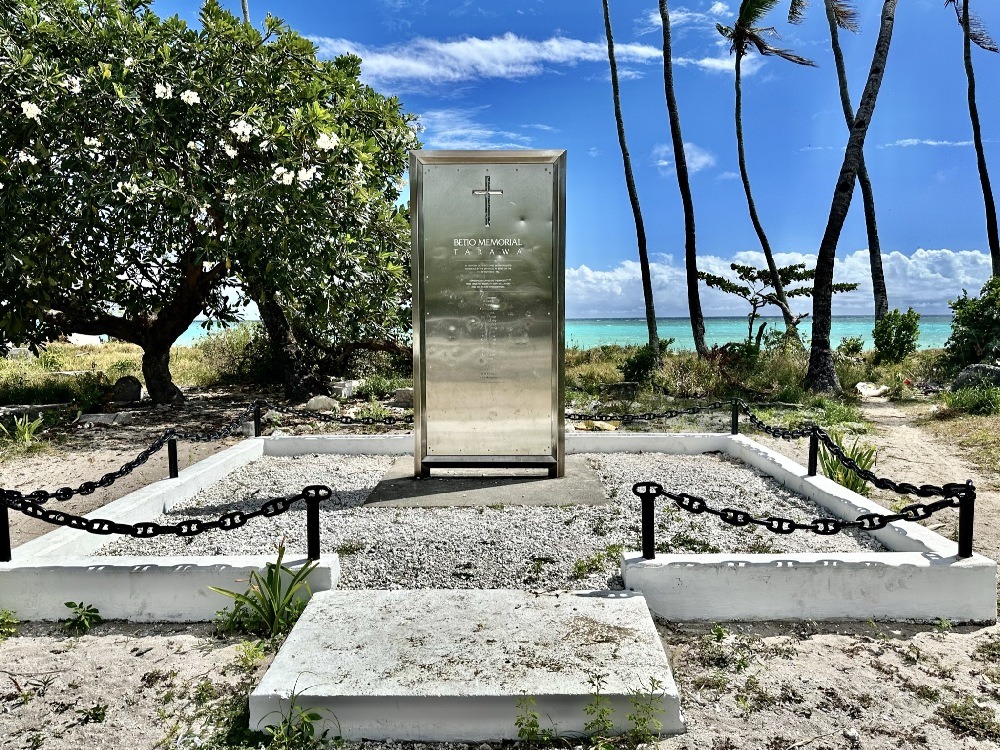
Restaurant Row
I stopped for a bowl of seafood soup at a group of what I found to be the only “developed” restaurants on the entire chain of islands. Big Ds, Mary’s Beach Café and The Kiribati Sport Fishing Club were three establishments, built side-by-side out of cargo containers with wooden decks in front. This grouping of restaurants was the only resemblance of a first-world dining establishment I saw my stay entire here. There was a restaurant back at Utirerei, but it was closed for the holiday break.
After the snack, I headed towards the other end of the islands, past the hotel and airport and onto the final drivable island of Buota. Just getting onto Buota was an adventure: I crossed a one-way metal bridge that clacked and clanged the entire way. Only one car at a time was allowed on the bridge, which told me it wasn’t the strongest. Once across, I pulled over to watch the kids in the water below. They were having fun running, then sliding (upright) along an algae covered road partially submerged in the water below. I wanted to try but I also didn’t want to break my spine.
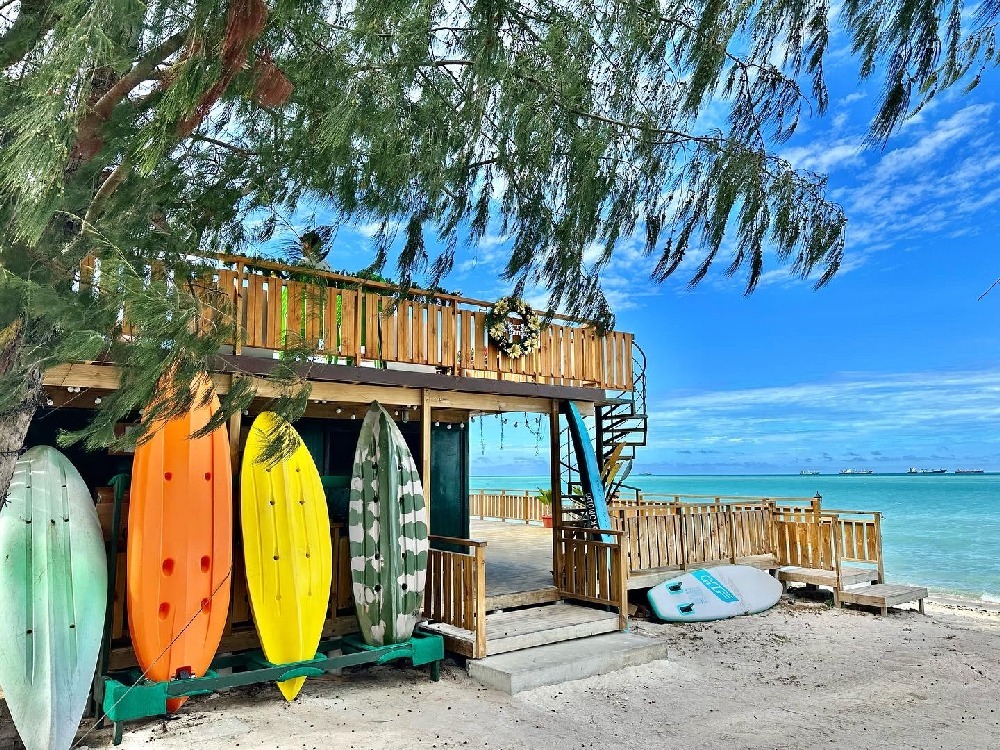
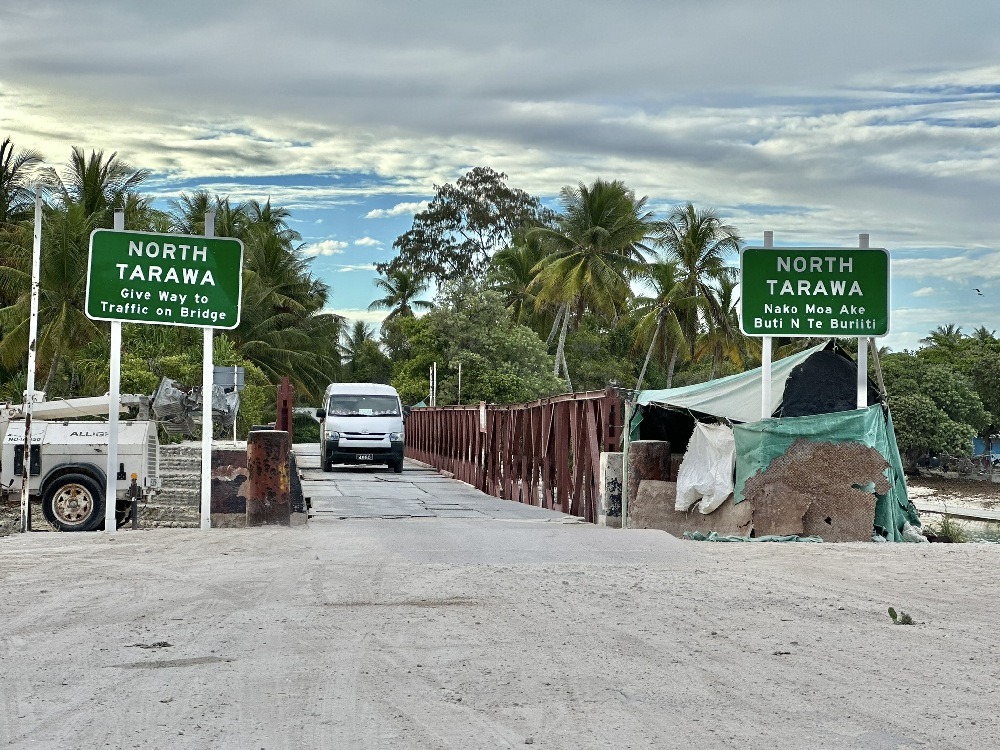
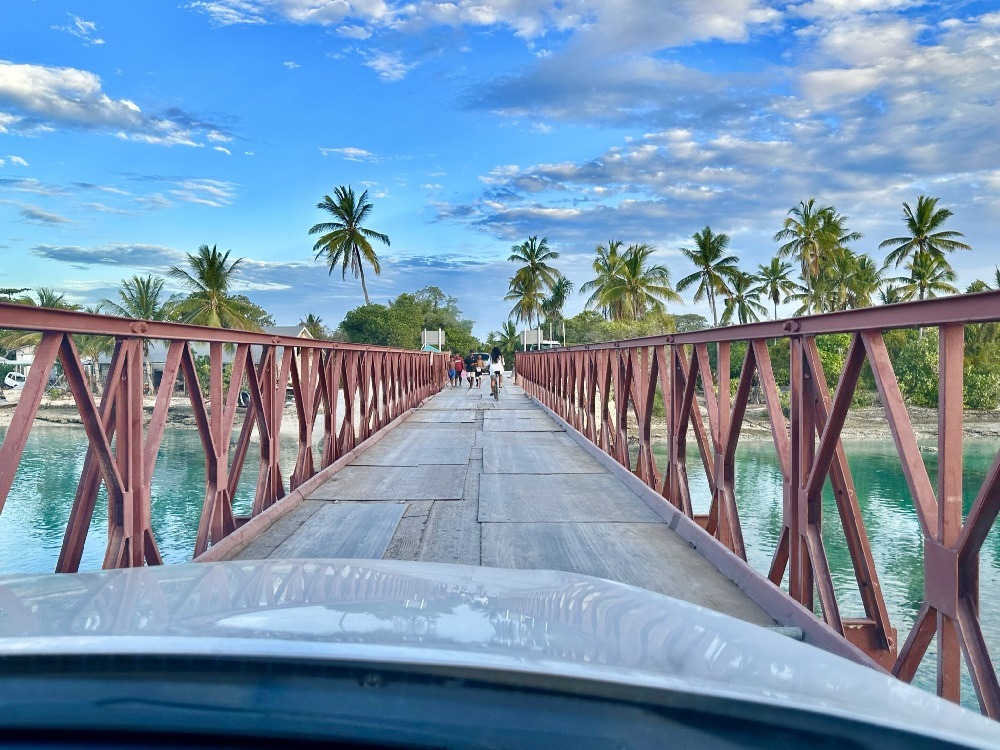
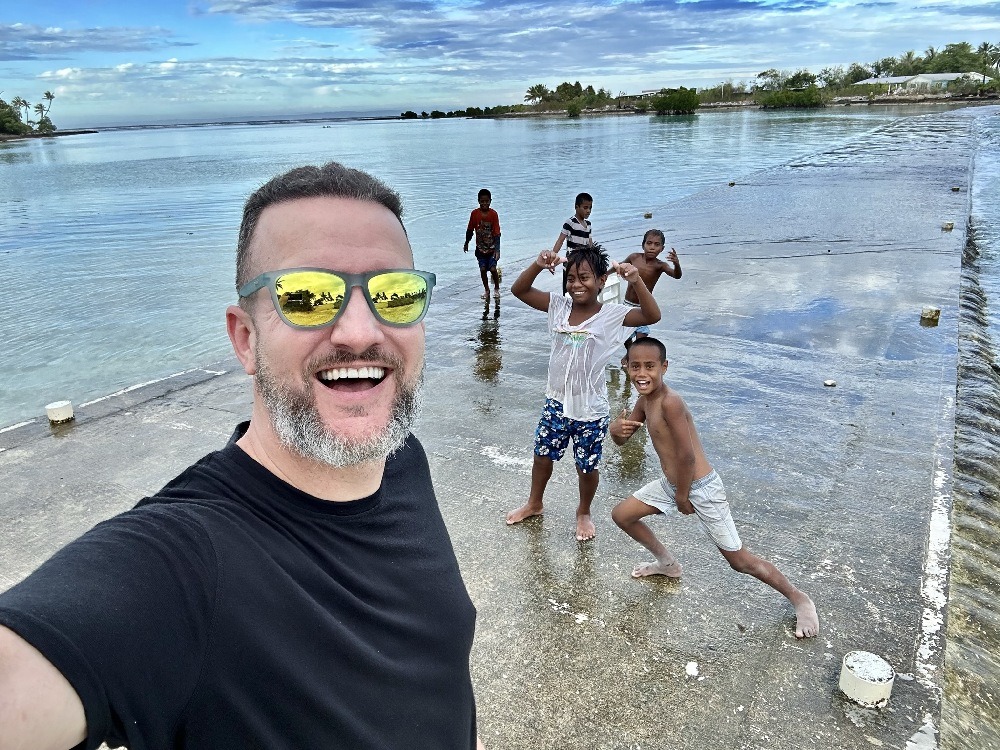
The Buota Bounce
Back in the car, the asphalt of Buota soon ended and I was bouncing up and down a sandy road with enormous craters – the kind you had to navigate around at about 2mph. It reminded me of the roads in Guinea Bissau. Luckily, besides this small stretch of non-stop potholes, the roads in Kiribati (or at least Main Road) were in pristine condition.
Soon the road ended all together. It was the end the line. I’d reached the water. This was the point were you could wade across or be ferried on a small boat to the other side. The next island was only about a thousand feet away. I’d cross tomorrow.
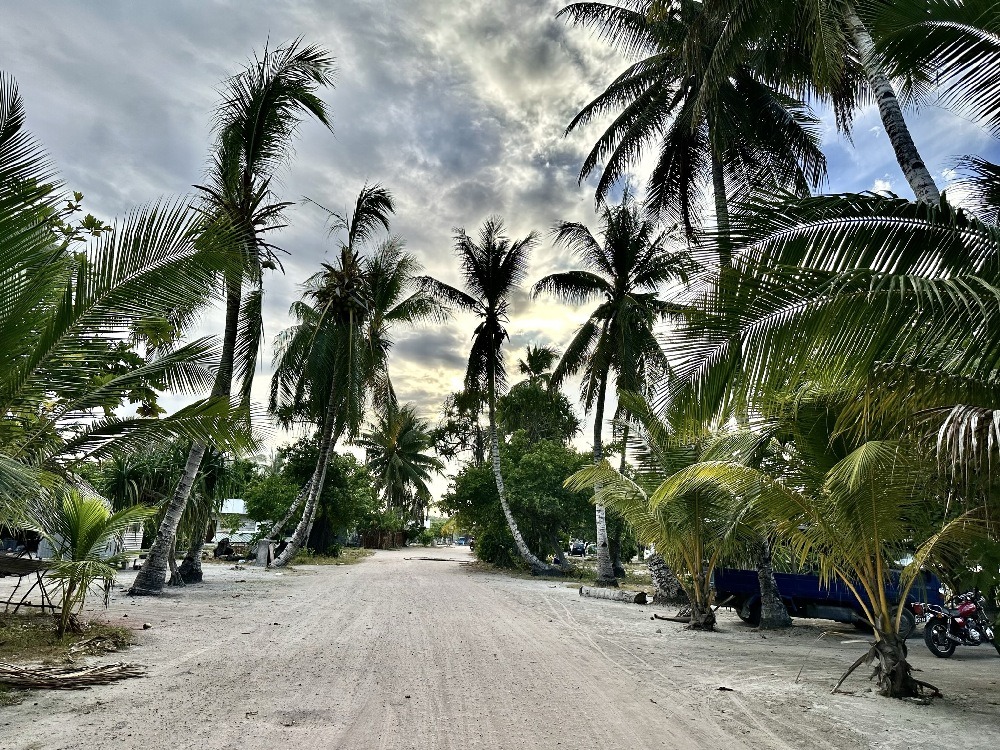
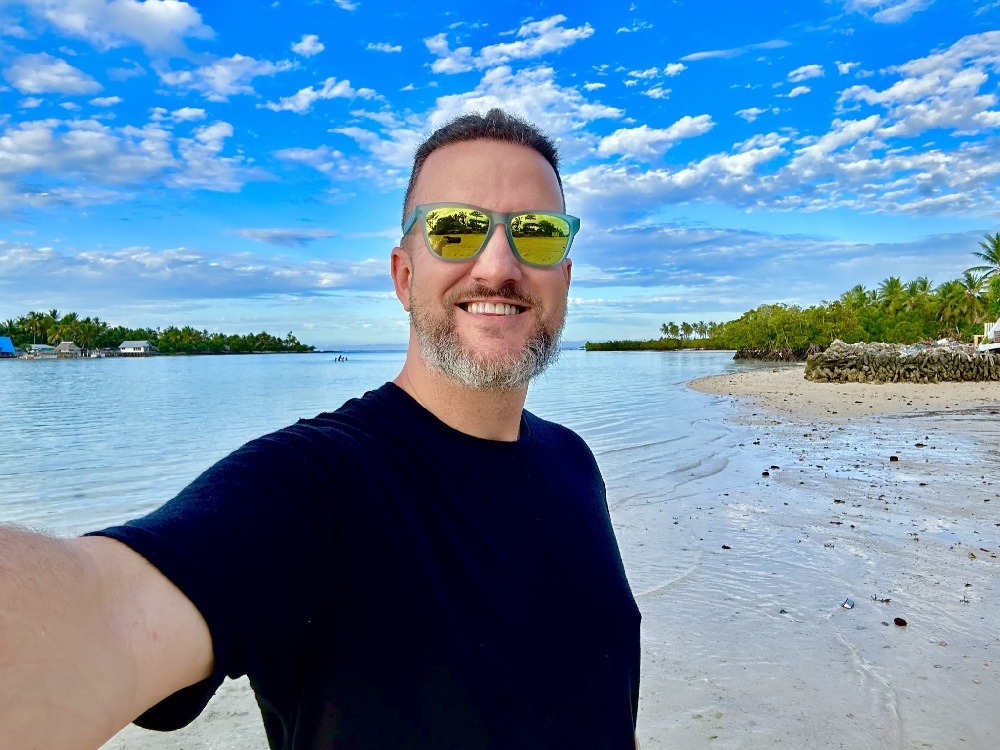
Day One
My first full day started with the drive back to Betio for a banana smoothie and the best flat white I’d had in my life over at Mary’s Café. I checked out a few more WWII relics and then headed North, past the Parliament building, over that rickety metal bridge again and to the end of Buota, where I’d leave the car and start my journey on foot.
I opted for the “wading” option to cross the channel – the water only coming up to just below my belly button. Soon, I was on the other side, walking across the island of Abatao. That’s when it got real – the true island experience. Abatao has zero cars and zero roads – only sandy trails that pass by little villages with huts, a couple schools, and tiny churches and shops. My favorite part of the journey was the groups of curious kids that waved, smiled, laughed and said the only few English words they knew: “Helloooooooooo!” when I approached and “Bye-Byeeeeee!” when I passed. A few of them would follow me for a few minutes, giggling and laughing all the way. This is one of the few societies not yet tainted by the Internet, electronic “devices,” and Western culture. What a life they must live! It was like going back in time and I loved it! Those kiddos were so sweet.
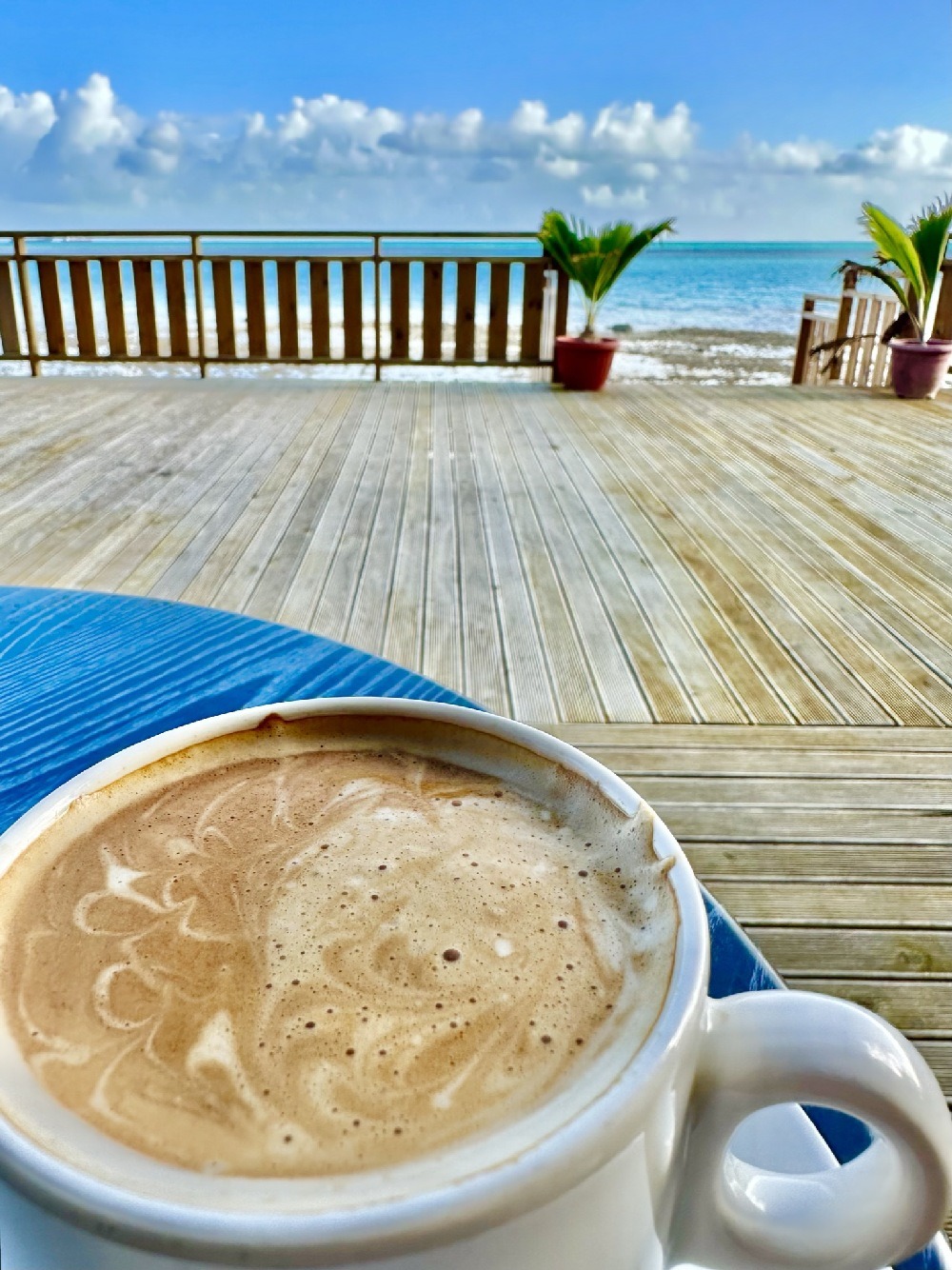
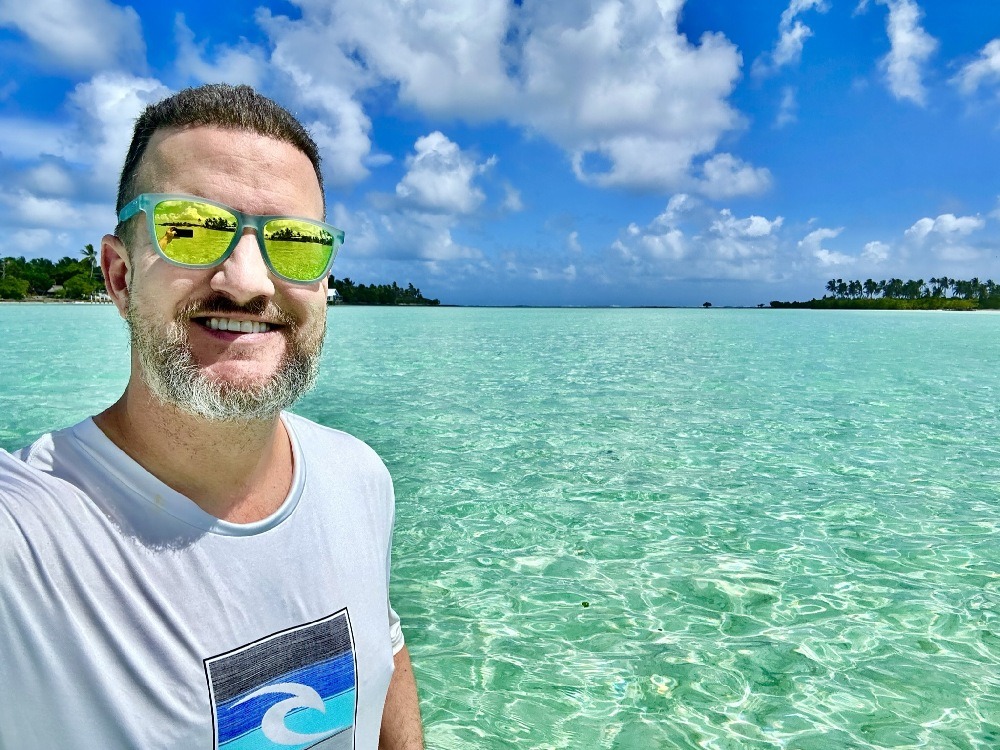
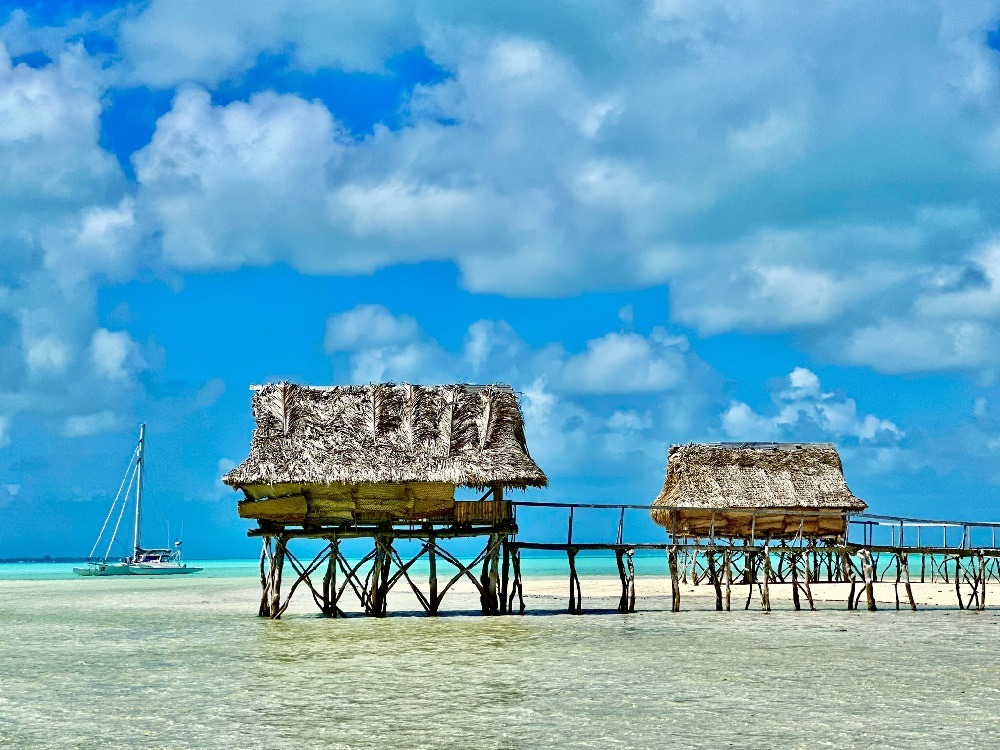
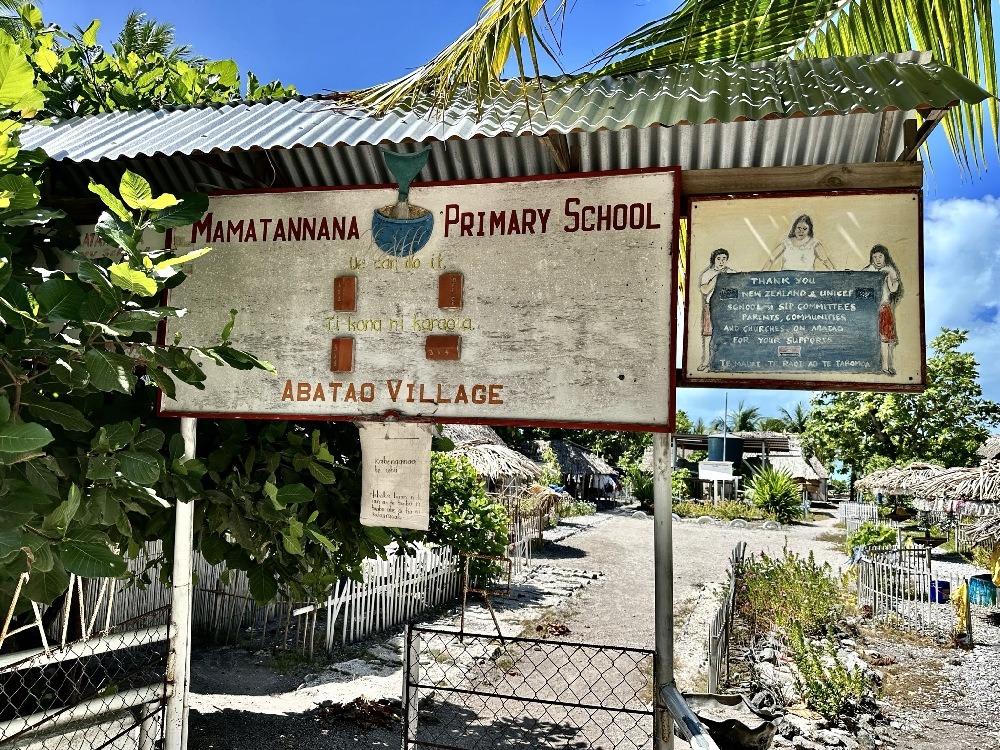
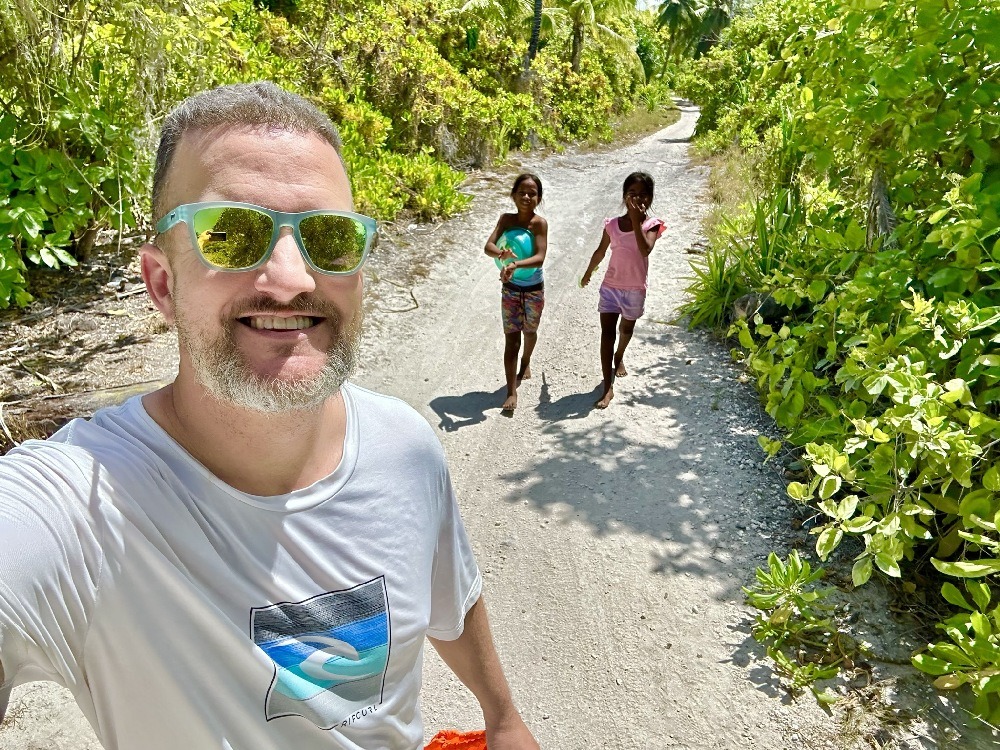
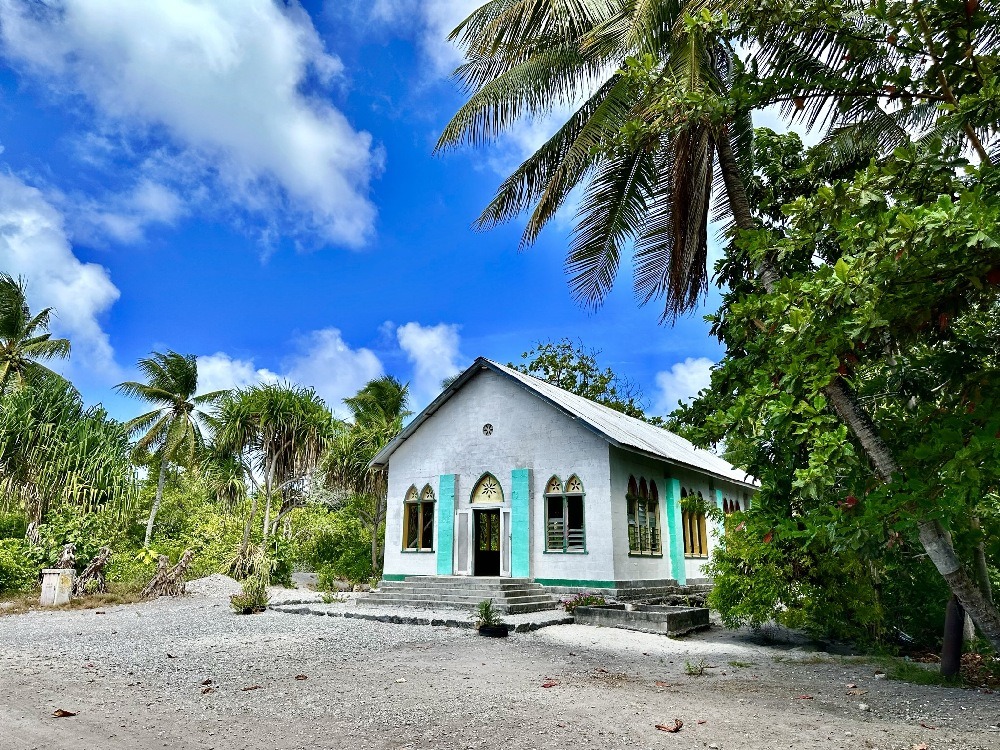
La Isla Bonita
I passed over a broken bridge, coincidentally named “Broken Bridge,” as the trail narrowed to the width of one person. A few motorbikes would pass, warning me with beep so I could step to the side. Finally, about an hour and a half after setting out on foot, I reached the very end of Abatao, and it was pure paradise.
The channel glistened with colors of pure white, light turquoise and deep blues. There was a small, sandy island that I claimed my own, throwing down my bag and enjoying the surrounding waters. And besides two kids that would come and go via kayak, there was not another soul in sight. This was nothing short of a dream. It would only be more perfect had there been someone on-site making piña coladas and fried shrimp. Anyone want to invest? Nah, I’d be the only customer – at least for today!
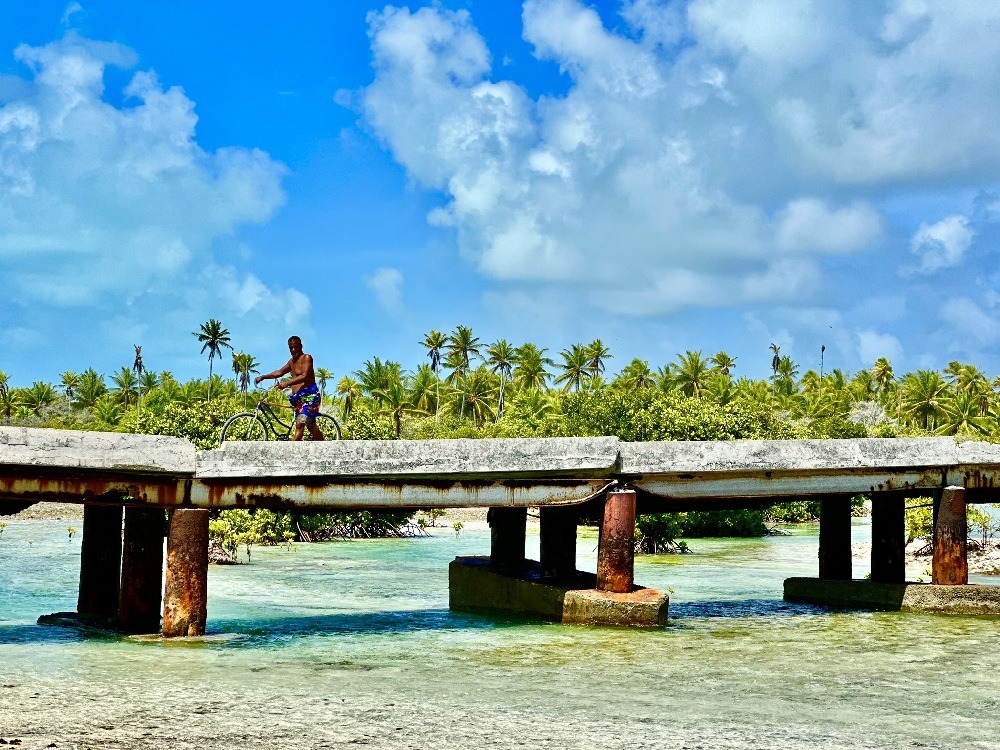
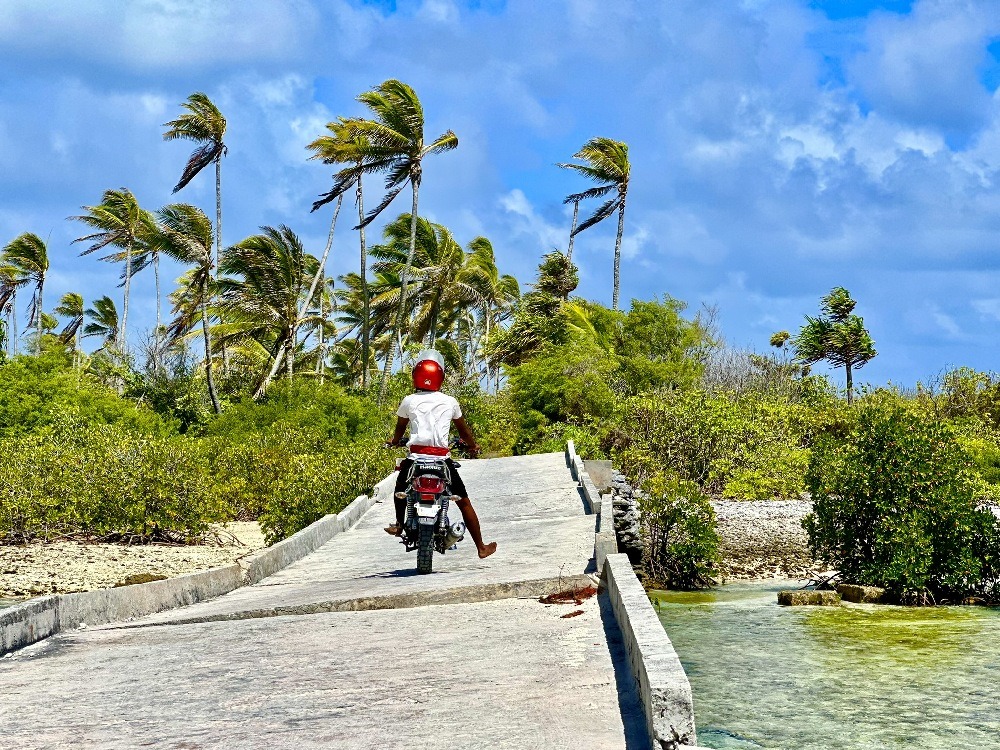
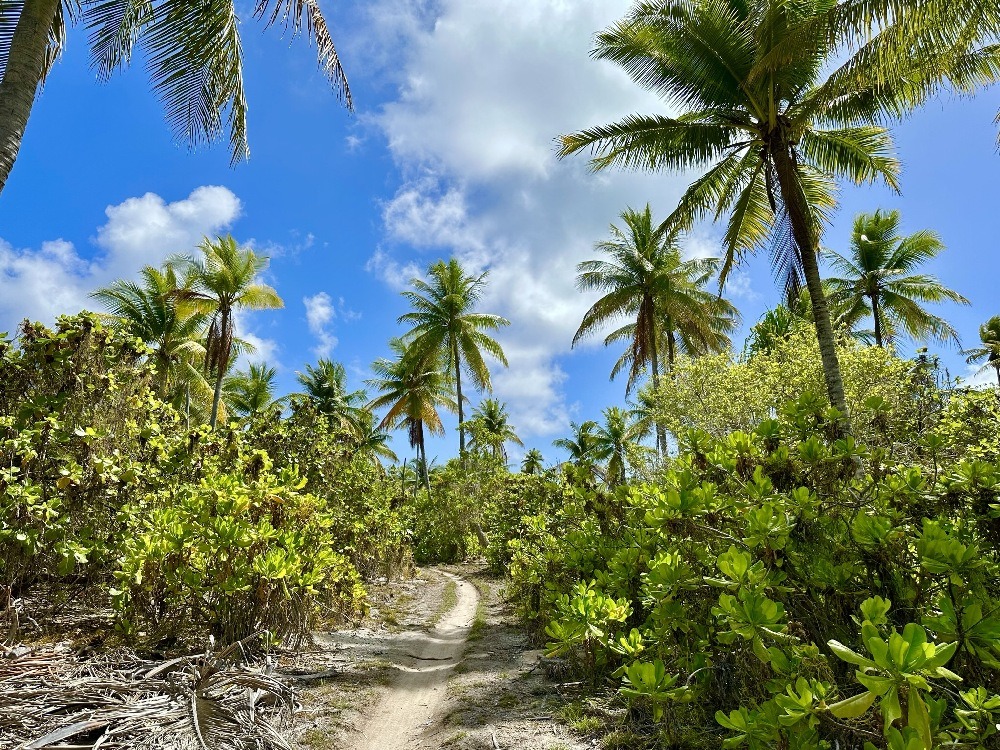
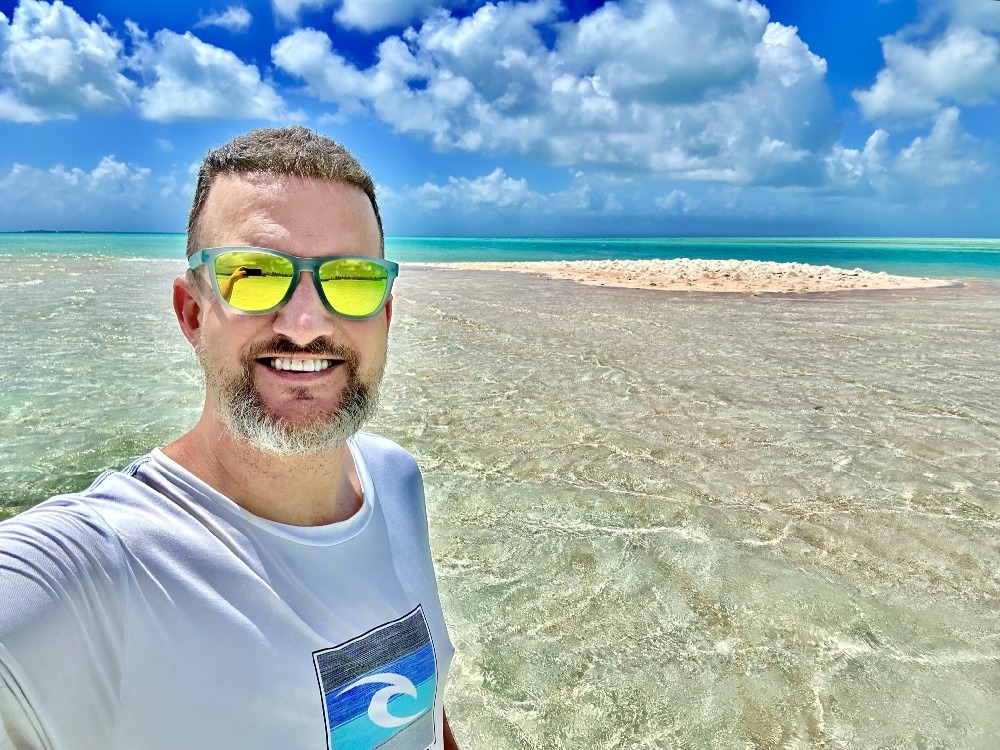
Alone in Paradise
I paddled around for a while soaking my tired bones. It was not a prudent idea to hike four miles in swim shoes. Don’t do that. I explored the surrounding shores before attempting to cross the channel to the next island, but I deemed the current too strong. The last thing I’d need was to be swept out to sea with absolutely no one to hear my screams. I really wanted to cross, but it was not in the cards for today. Now, I wondered just how the hell I was going to get back to my car. I could not bear another four miles in swim shoes. The tops of my toes were already getting rubbed raw – I’d surely arrive home with bloody stumps for feet if I attempted the return on foot. Luckily, $13 got me a seat on one of the back of one of the local’s motos. I was probably obscenely overcharged, but it was worth every penny.
This time, I ferried across the channel back to my car on Buota. You give the lady in the hammock 20 cents and get in the little boat. It was back to Utirerei to rest, shower and then have a fish-n-chips dinner on the water at Koa Koa’s. It was a great day in Kiribati.
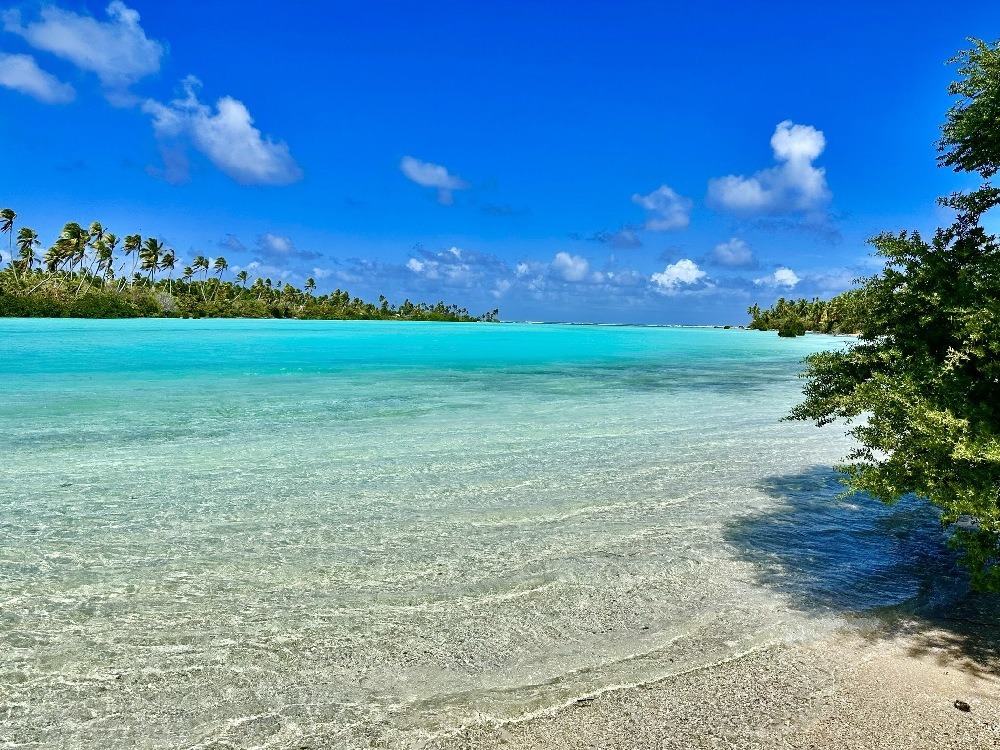
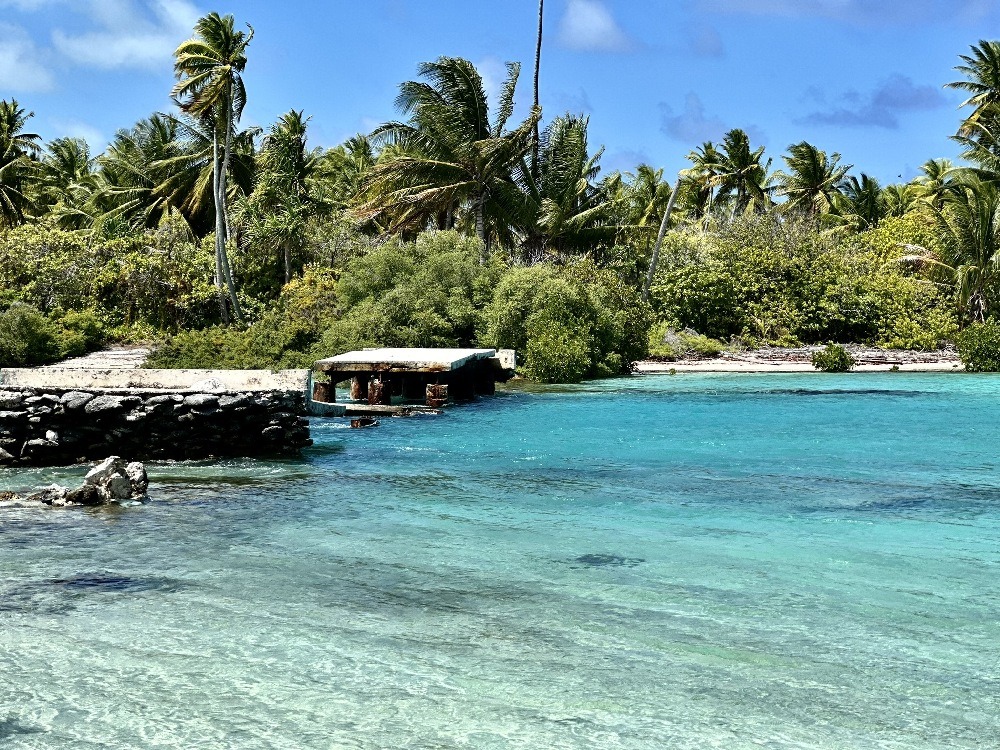
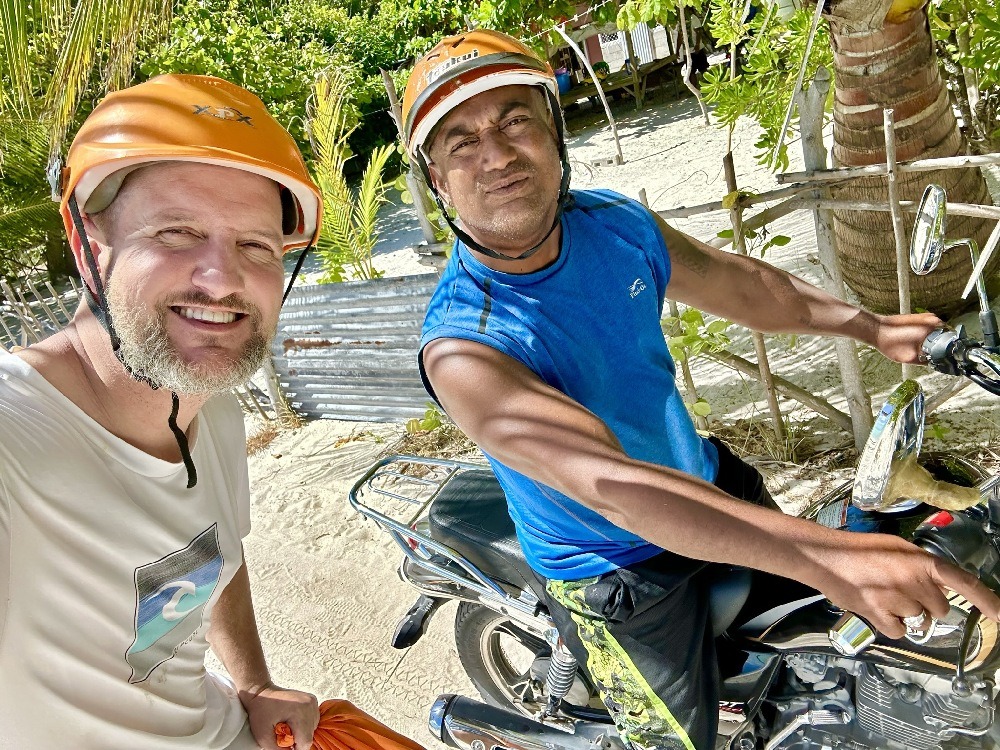
Day Two
I toyed with the idea of taking a domestic flight around the islands via Air Kiribati’s tiny prop plane, but the schedule didn’t work out. Instead, it was a lazy morning with another flat white over at Mary’s and a stop by the Parliament building before getting ready for a boat trip.
There are no organized “excursions” in Kiribati for tourists, or at least none that I know of. The lady that rented me my car simply gave me a name and a general direction of where “the guy with the boat” lived. And there I was, entering a village with women cooking in huts and chickens and pigs roaming about.
“I’m looking for Buoni Baro,” I asked the crowd.
Soon the middle aged man wearing shorts and a basketball jersey appeared from a shack as I introduced myself and we came up with a plan and negotiated a price. By 12:30 I was stepping inside a small wooden fishing boat and heading off into the sea with two men who spoke no English. What could go wrong?
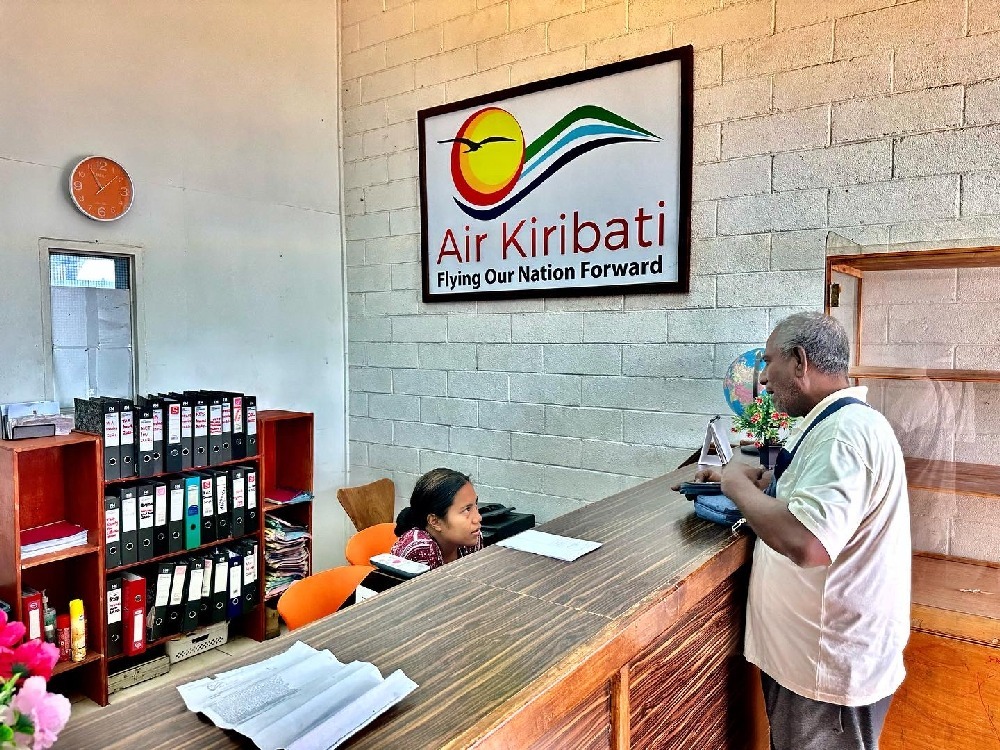
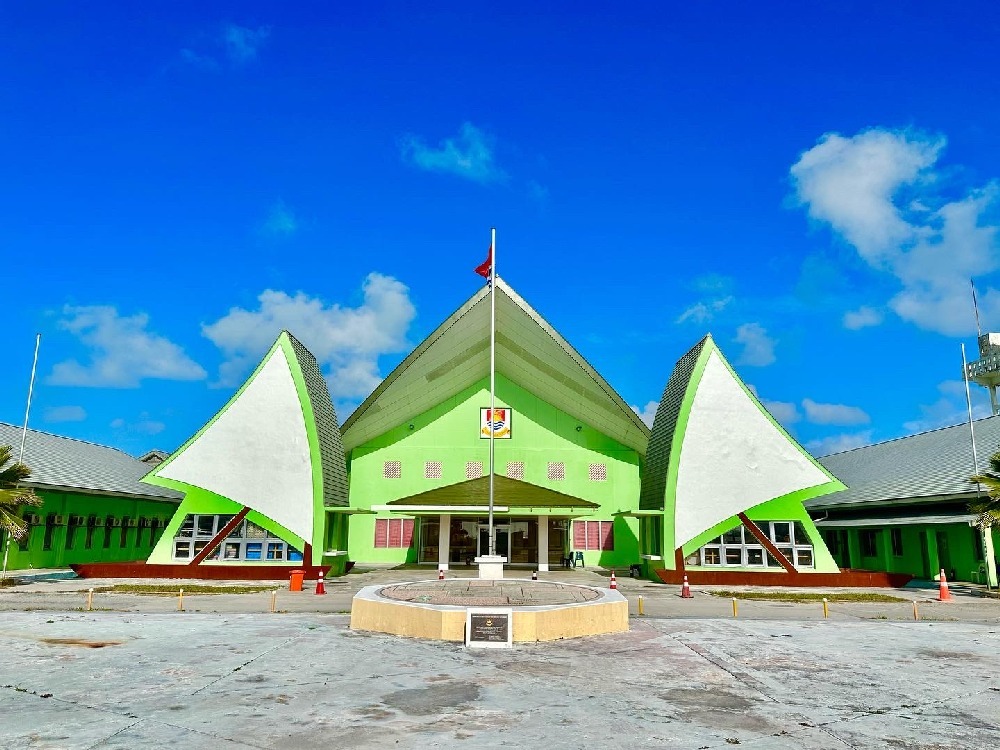
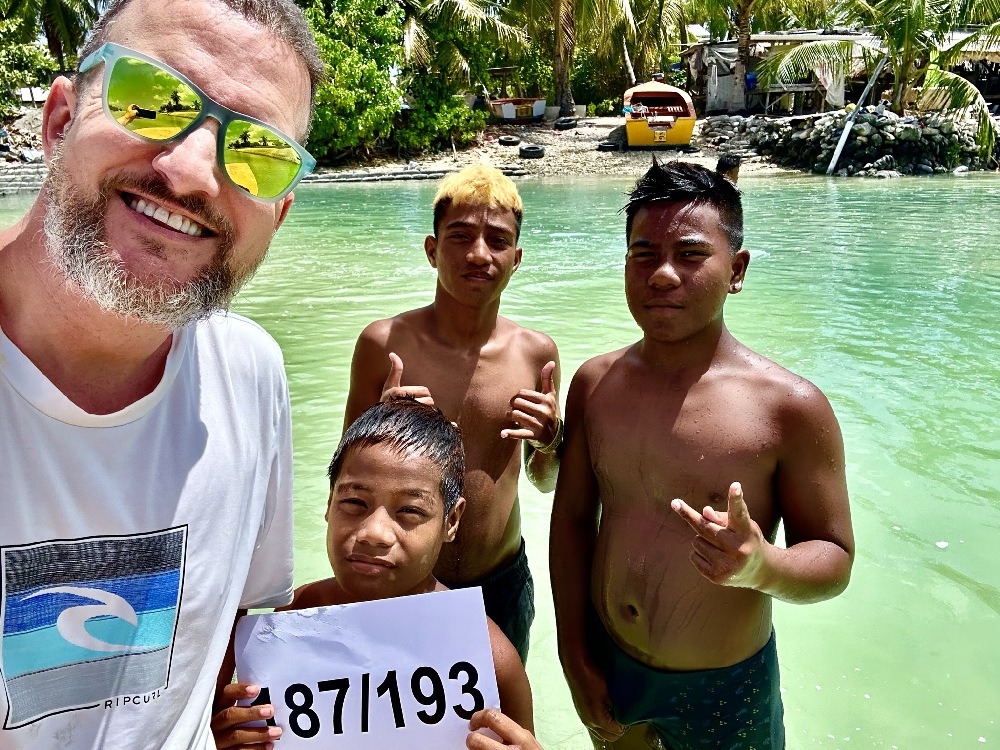
A Three-Hour Tour
We hit the sea with the boat slamming up and down over the waves. My butt and back proceeded to take brutal pounding on the wooden platform I was seated on, while I held on for dear life. There was no seat or even a seat cushion. What shook me more was the absence of any life vests. Not a one. No safety briefing and no forms to fill out. If I had died that day, my hosts wouldn’t have even known who to contact. There wasn’t a radio aboard either. What happens if they ran into trouble? I didn’t want to find out!
We were on our way to Naa, which was at the very northern tip of the island. It took us about 90 very uncomfortable minutes to get there. Was it worth the long journey on the little wooden boat? Not sure, but I did enjoy being out on the water with no one else in sight. With not much conversation going on with the non-English speaking crew of two, it was a time to clear my head and enjoy the solitude.
Naa itself—at least what I was shown—was nothing special. In fact, my solo swim the day before was in much prettier water. After we moved on from the tip of Naa, I did my best to ask the captain and his assistant if they could take me into the lagoon – I did this by showing them the lagoon and its entrance on my phone’s GPS – they would not understand my verbal requests. I’m not sure they’ve even been inside the lagoon, because they looked a little confused. When we finally made it in, to my surprise (and maybe theirs, too), it wasn’t a giant, open body of water, but rather a giant forest of mangroves. We made it in through a small channel before the plants really got thick. After turning around, we swam for a bit at the lagoon’s mouth and then headed back to sea.
The boat ride was a super long and uncomfortable trip and given the chance would I go again? Naa. (See what I did there?) But I’m glad my curiosity was satisfied and I can at least say I got out to some of the outer islands.
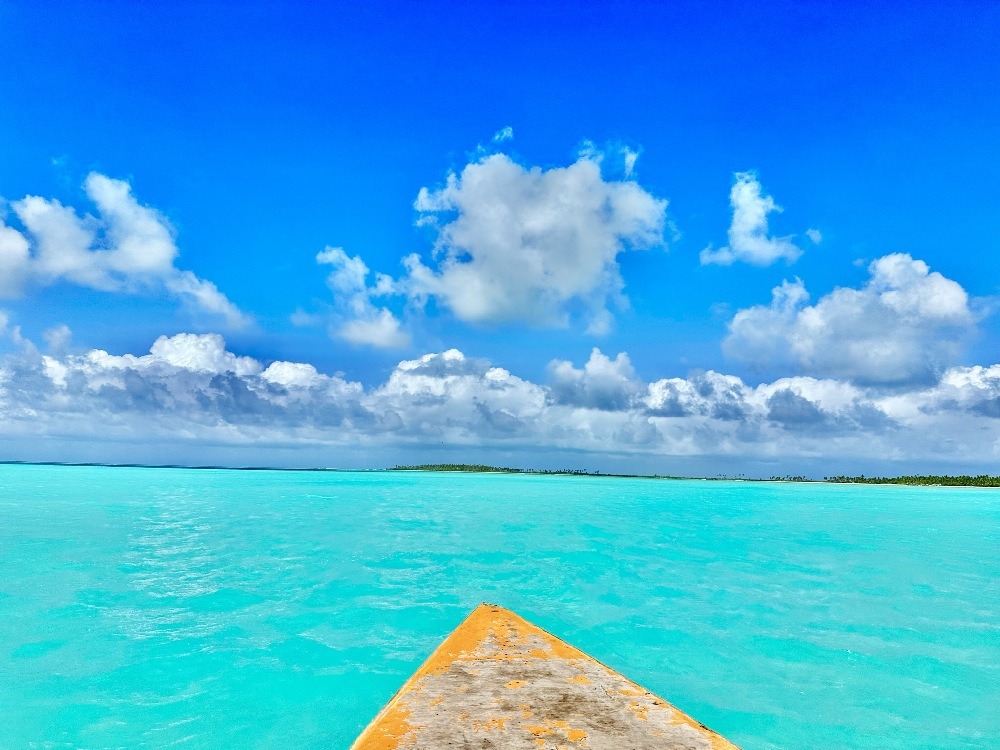
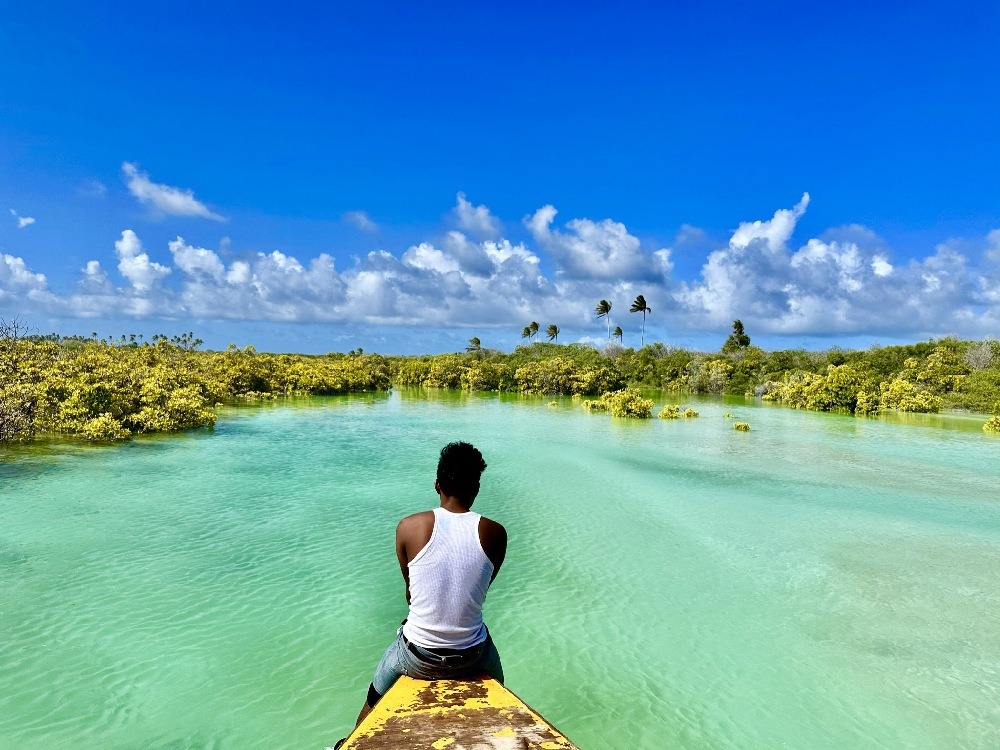
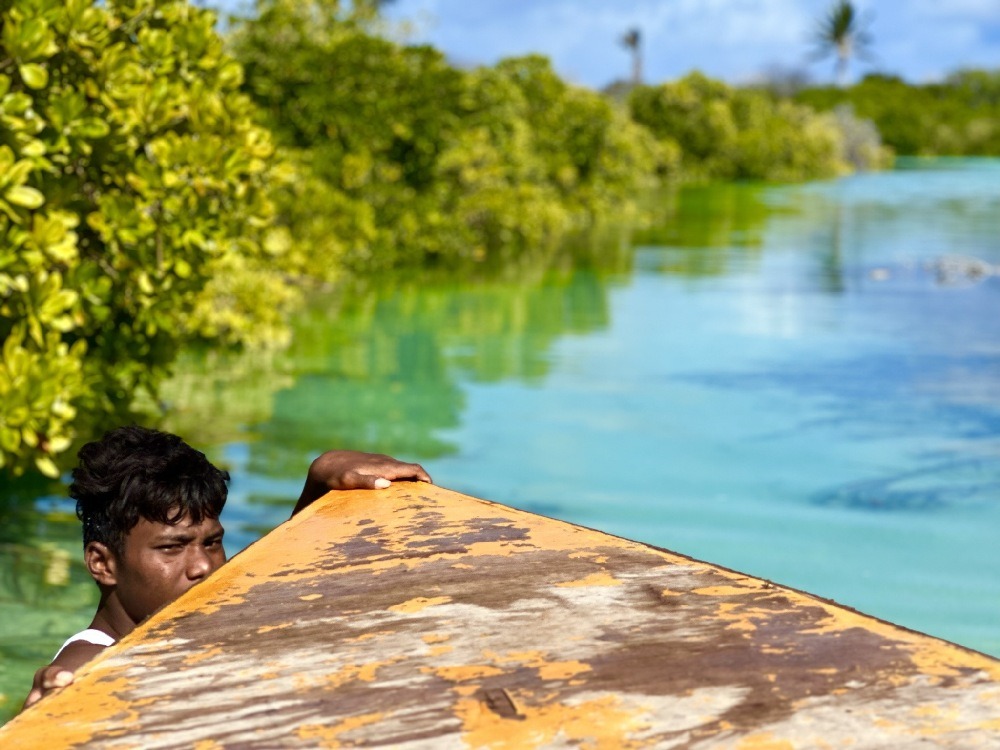
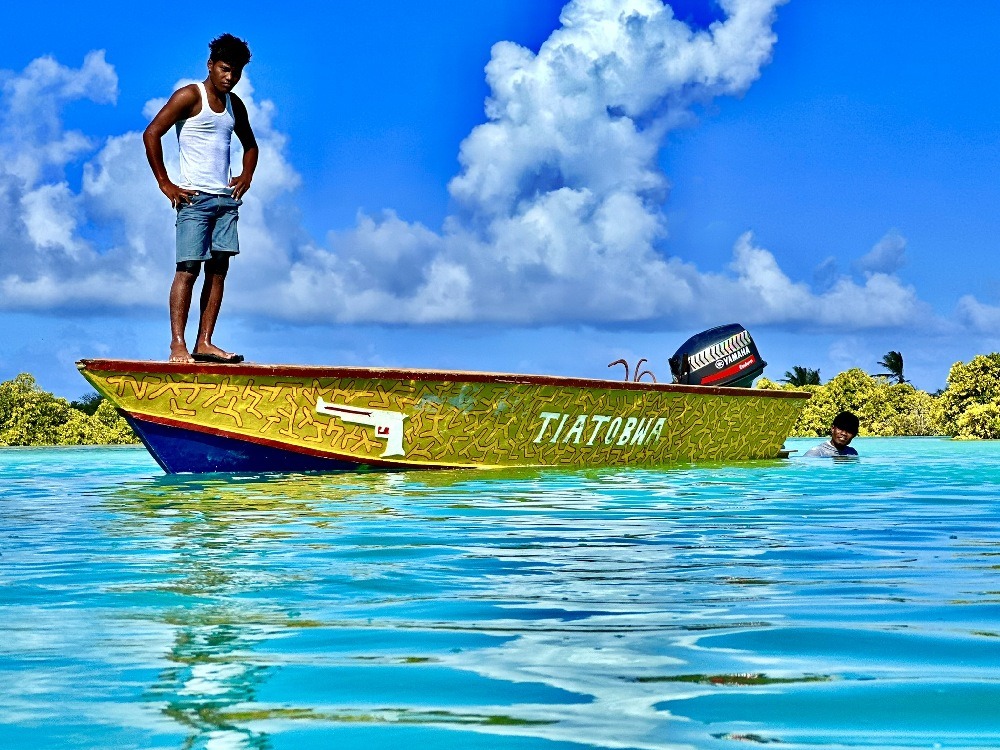
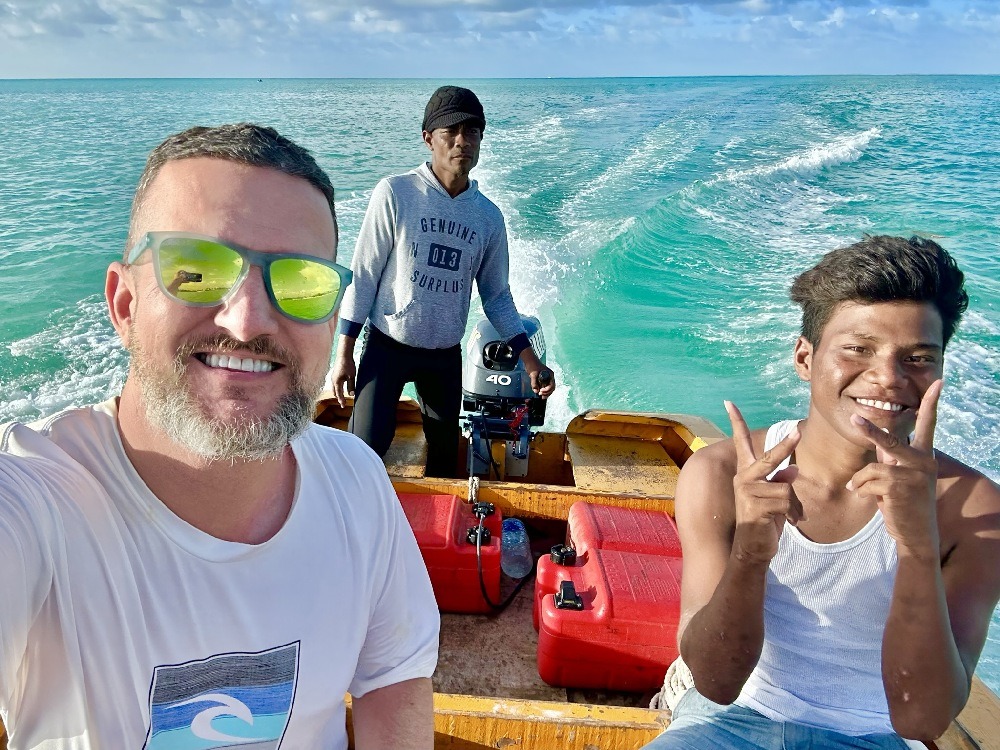
Buggin’ Out
That night, it was the beef curry at Koakoa’s Corner, as the sun set over the Kiribati sea. My company was Luisa (the rental car company owner), her British-Australian husband Arthur, and a cute little stray kitty who really loved me (or the scraps I fed her).
The biggest excitement of the trip was that final night when I discovered the candy bar-sized cockroach crawling up the yellow wall of my room. Damn, and to think I almost escaped Kiribati without any creepy-crawly encounters. Luckily, the little shop right outside the hotel carried big cans of bug spray, which did a great job in murdering the intruder. I sprayed so much of the aerosol poison, I poisoned myself a little bit, too. No, really.
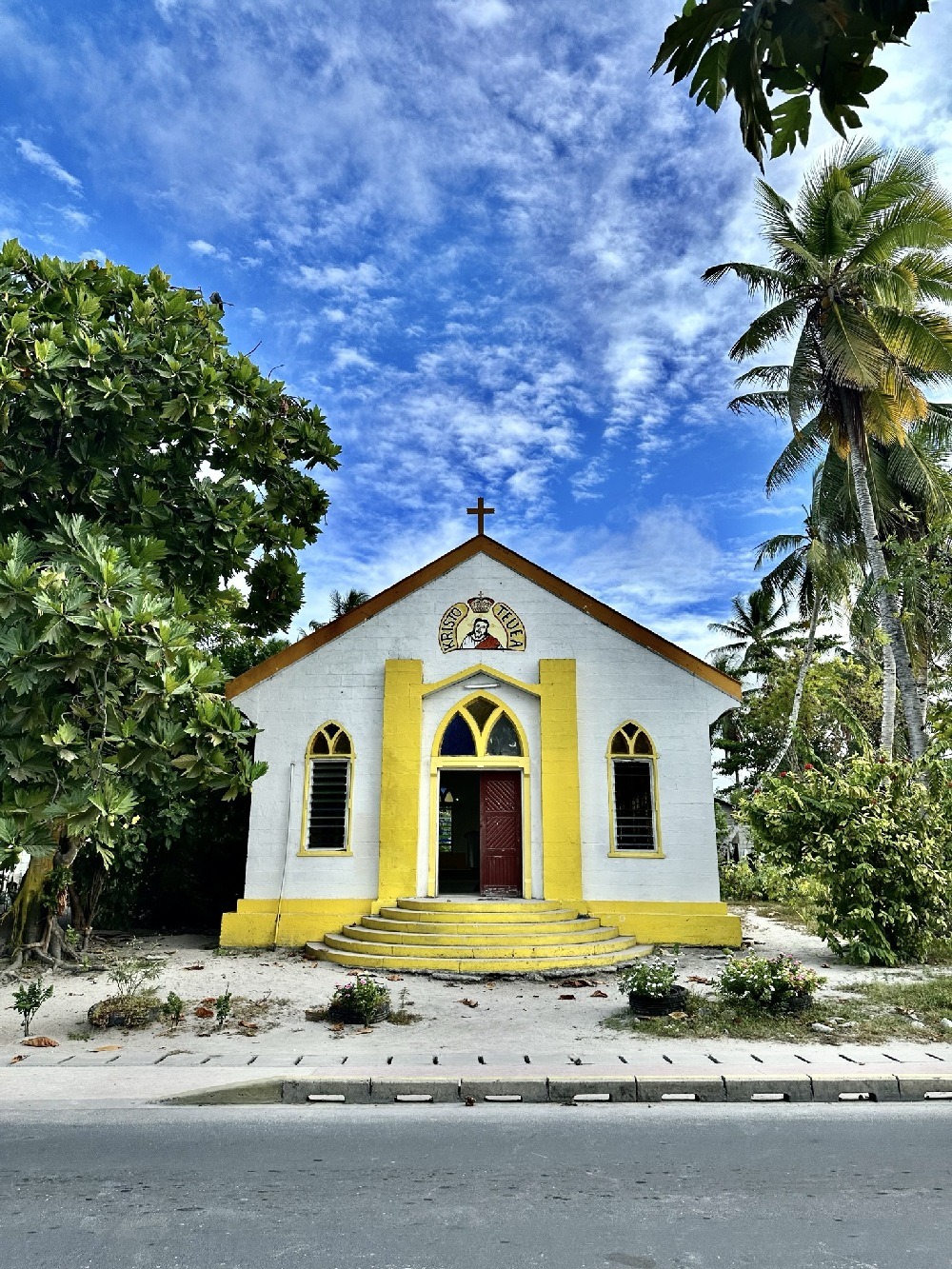
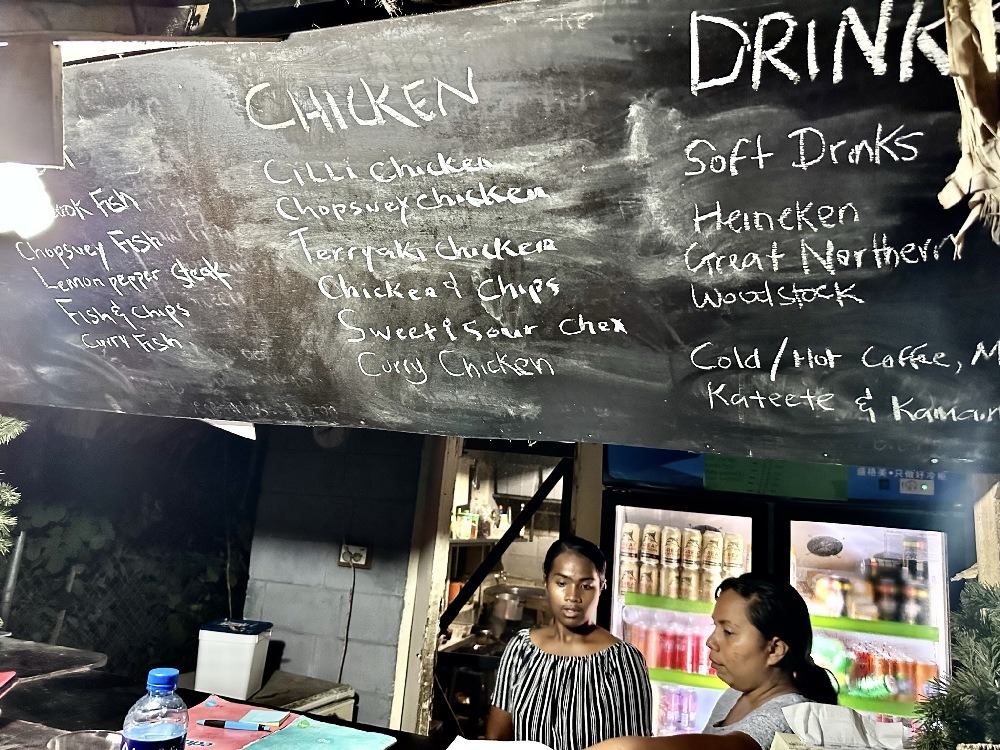
Kiri-Bye-Bye
The next morning was spent packing and prepping to leave. I grabbed coffee at Mary’s and hit the post office before turning in my rental car at the airport and saying goodbye to Kiribati. I am proud to say by day four, I was driving like a local pro. I’d gotten used to the truck’s size and controls, the narrow roads and all of its distractions and hazards, and driving on the left. I was no longer skittishly inching my way down the road like a timid old lady, but now cruising from one end of the island to another with calm and confidence, even passing the slowpokes.
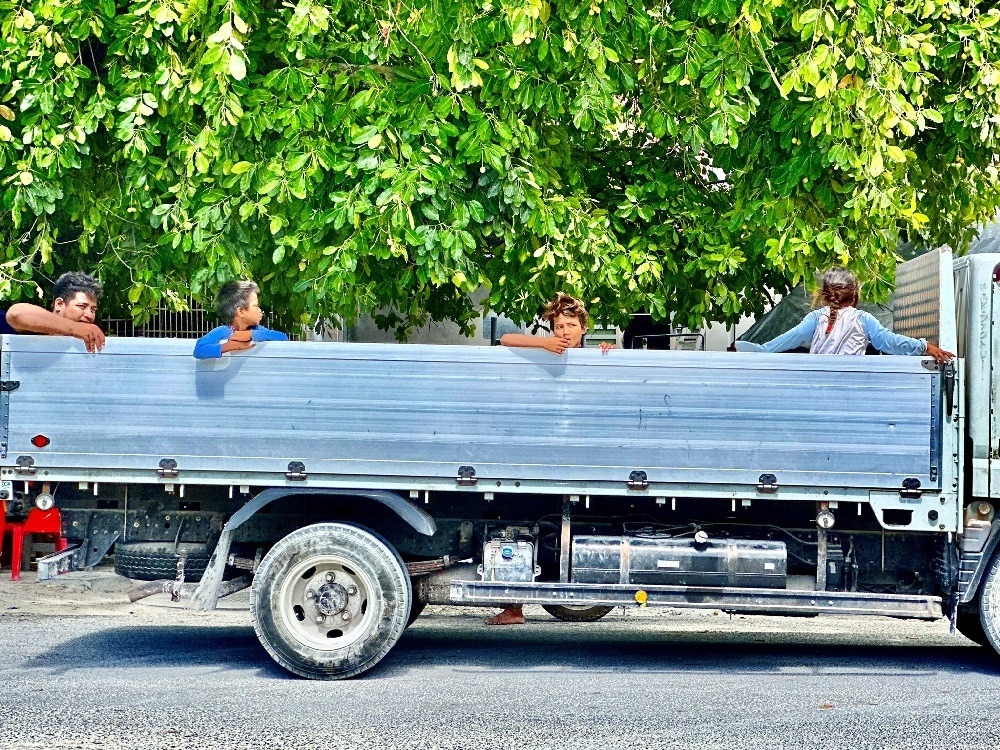
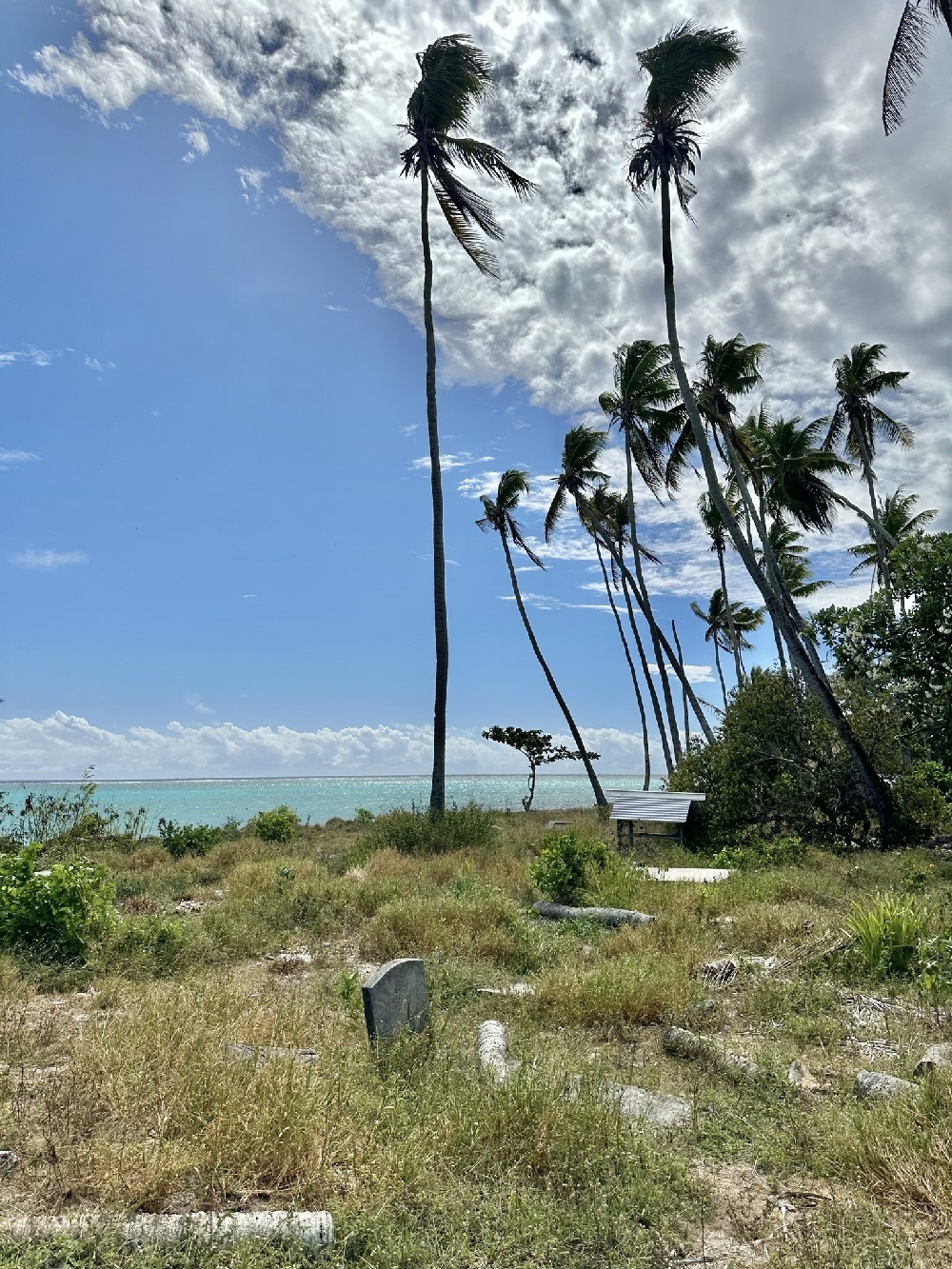
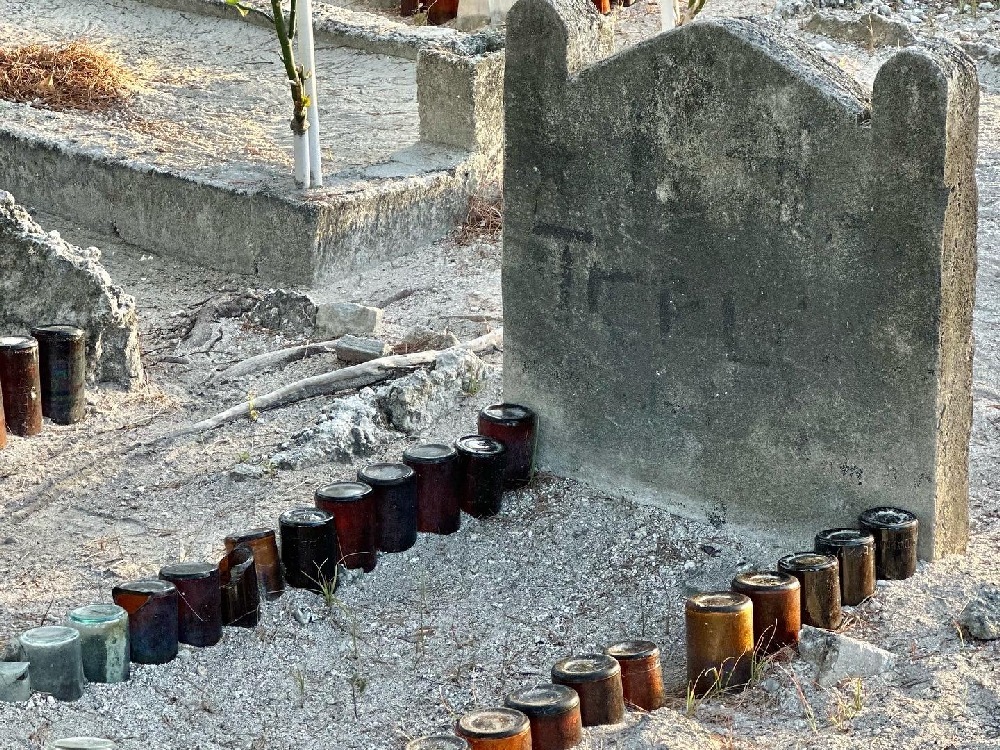
Final Thoughts
I feel so fortunate to have been able to experience such a special place – a country most people have never even heard of. I was able to be there – to swim in the waters, walk through the villages and spend time with the people. And the people were indeed my favorite part of Kiribati – not just because of their friendly demeanor, but I absolutely loved observing one of the few societies still (overall) “disconnected” from the internet. There wasn’t a smart phone in sight. Instead, I saw kids being kids. Everywhere I went – and I mean everywhere – I saw kids playing. They were running, jumping, smiling, laughing…playing with old toys cars, with marbles, even a good old-fashioned tug of war. And of course, they were swimming in that beautiful turquoise water, which was all around, and just steps from their front doors. I couldn’t help but think what happy and innocent lives these children must live, without the pressures of having to keep up with trendy fashions or social media expectations. To see these kids experiencing life, instead of walking around with their nose in a screen, was so refreshing. This is just how life is here in Kiribati, and I loved being in the middle of it all, if only for three days.
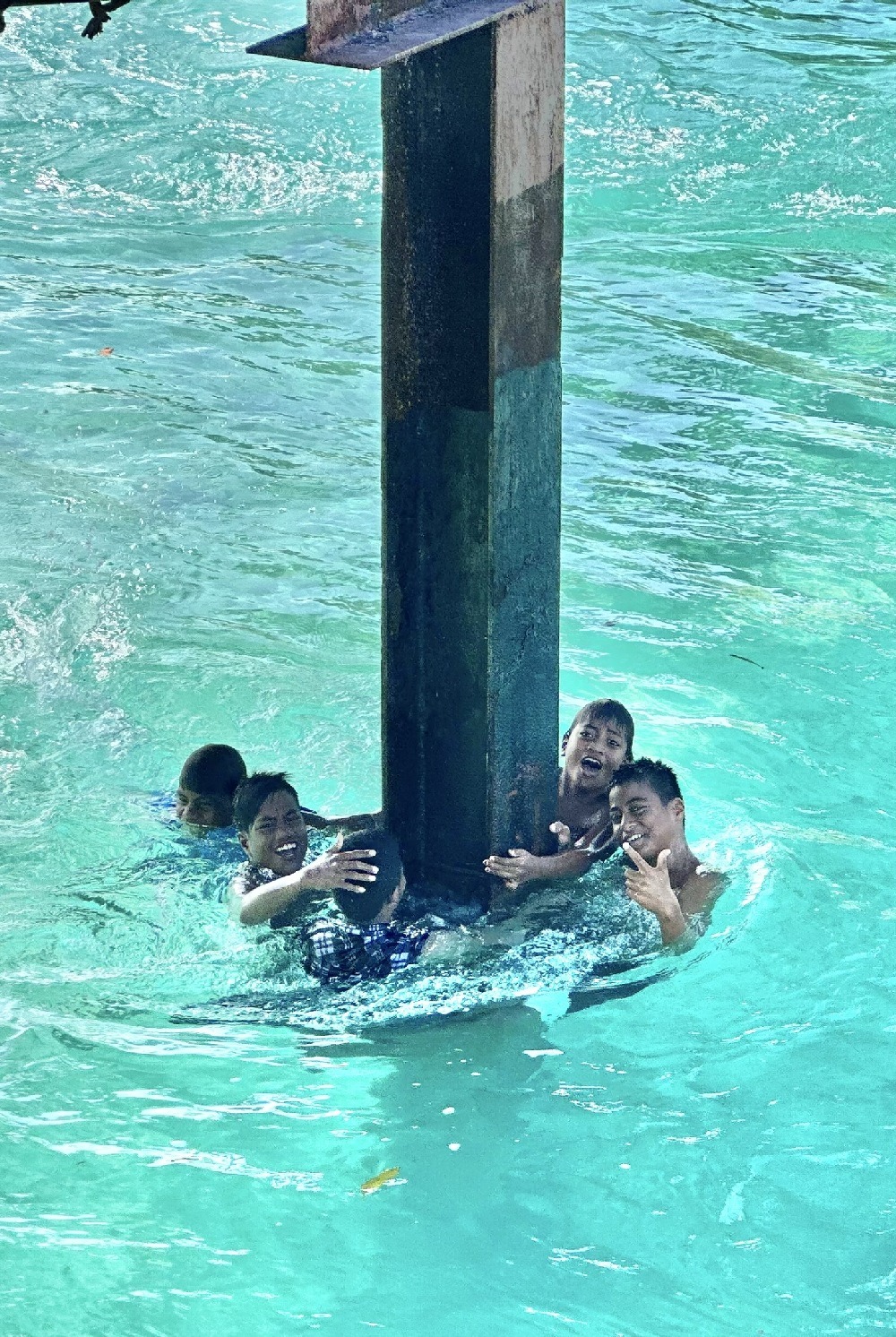
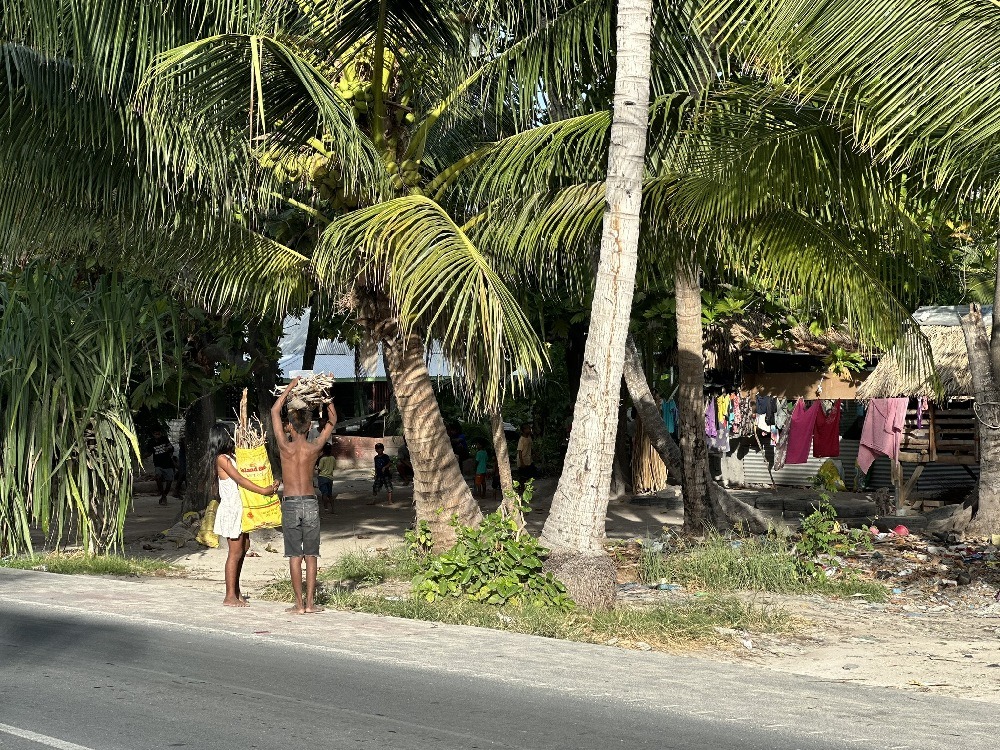
Hotel Motel Holiday Inn
I may also be a little embarrassed to admit that I was a tad bit uncomfortable with the accommodations in Kiribati. You learn a lot about yourself when you travel the world, and I have come to the conclusion that I am very spoiled. While my hotel room with four walls, a roof, AC and hot water is considered absolute luxury and the best of the best in Kiribati, it was very rough according to American standards. And just when I was getting acclimated to that dingy old hotel room, the cockroach sent me over the edge. I was ready to go home.
The lack of decent places to eat was also troubling here. While I know there are plenty of my fellow travelers brave enough to eat street food from the local shacks in here, I’m just not quite there yet. I don’t need any fancy bistros, but I do hope for at least somewhat clean and developed structures when it comes to my dining…and Kiribati didn’t have them. It’s hard to imagine an entire country without at least a couple passable restaurants, but besides that one grouping of three cargo container restaurants, I saw nothing else on the island. And even those three restaurants were very limited – for example not one of them served breakfast. It was like the meal was non-existent – as if breakfast just wasn’t a thing in Kiribati. I settled on their smoothie offerings, however, on day two they were out of milk and on day three they had no ice – which meant I had no smoothie either day. These are not complaints, just observations. And I realize you can’t have both: You can’t see a country that’s visited by almost no tourists and expect “tourist things.” It’s totally a trade off and I’m not mad at all! But I’d be lying if I didn’t admit how wonderful it was to check in to the cushy Sheraton Golf and Beach Resort in Fiji after my stay in Kiribati. I’d missed a fluffy bed with bright, white sheets, WiFi and endless great food options. Traveling the world really makes you appreciate what you have, even simple things like TV and cell service.
Suggestion Box
Surprisingly, Kiribati does have a tourism department. So just for fun – if I was suddenly put in charge of the agency, I would try and put the following into place:
1. Build just one nice, updated hotel. Just one! Or do a major refurb of Utirerei.
It doesn’t have to be fancy, just clean and modern. I remember how nice the Best Western in Port-Au-Prince was! Having somewhere decent to sleep can really improve one’s stay, overall.
2. Institute a major trash clean up and “no litter” campaign.
It’s always tragic to see heaps of garbage poisoning such spectacular landscapes. Executing a major, all-hands-on clean up and anti-litter campaign would provide a noticeable improvement and should not be cost-prohibitive. Hold raffle and give an entry ticket for each bag of trash handed over!
3. Make the move from autos to golf carts.
There sure were a lot of vehicles here for such a small island. Maybe I’m living in a fantasy world, but wouldn’t golf carts be cheaper and more practical? Crazy idea maybe, but the island is so small! Why wouldn’t you do this? Lots of sun to power solar battery chargers, too.
All of this is very idealistic, and of course, would cost money – but hey, I’m a dreamer, and dreamers dream! Kiribati is a paradise with so much untapped potential for visitors.
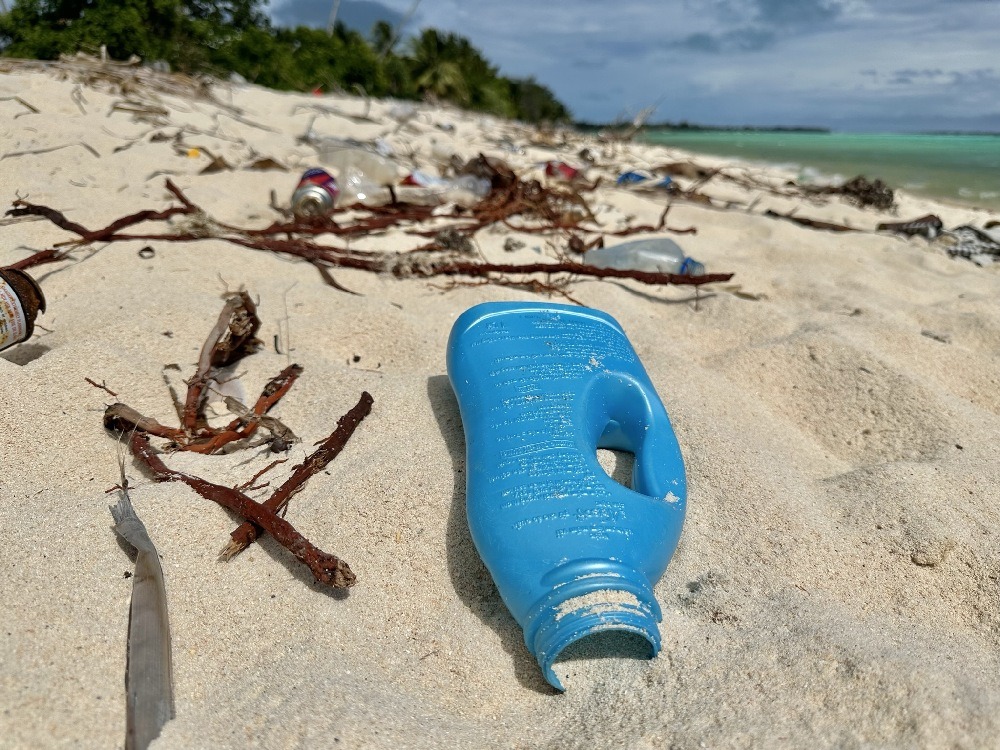
Kiribati vs. Kirimati
Over 2,000 miles away from where I visited (Tarawa, Kiribati) is the island of Kirimati. The name Kirimati is derived from the English word for Christmas in Gilbertese. Kirmati is only a three hour and 15 minute flight from Honolulu. So, if you’re trying to see Kiribati but are looking for a shorter flight, try HNL to CXI. It’s on my list!

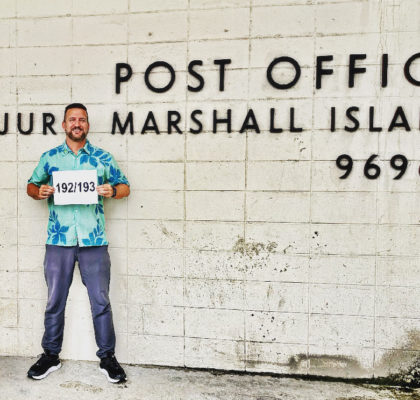

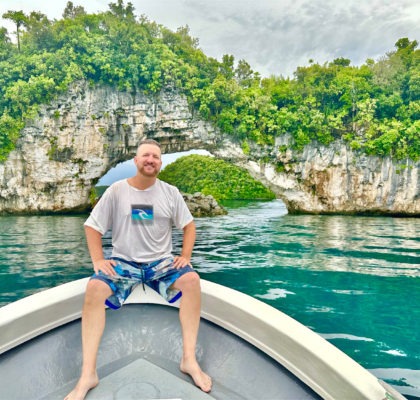
Very thorough and helpful trip report
Thank you so much!